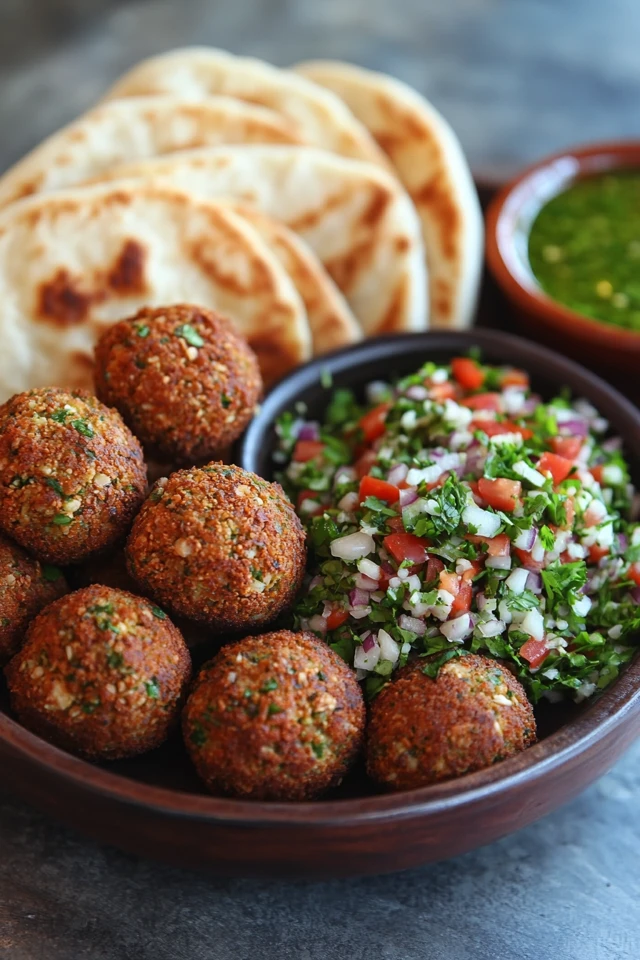Introduction
Embark on a flavorful journey with Middle Eastern Vegan Falafel Platter: Crispy & Tasty! This vibrant and hearty dish brings together the beloved falafel—crispy on the outside and tender on the inside—with an array of fresh accompaniments that elevate the traditional Middle Eastern flavors. Perfect for family gatherings, parties, or a wholesome weeknight meal, this vegan falafel platter is both satisfying and nutritious, ensuring that everyone at the table can enjoy a delicious and compassionate meal.
Falafel, a staple in Middle Eastern cuisine, is traditionally made from ground chickpeas or fava beans mixed with herbs and spices, then deep-fried to perfection. Our vegan adaptation maintains the authenticity while ensuring it’s entirely plant-based, making it suitable for vegans and those seeking healthier alternatives. Paired with creamy tahini sauce, crisp vegetables, and warm pita bread, this falafel platter offers a balanced and delightful dining experience. In this comprehensive guide, we’ll explore the benefits of vegan falafel, provide a detailed recipe, and share tips and variations to customize it to your liking. Let’s dive into creating a crispy and tasty Middle Eastern vegan falafel platter that will become a favorite in your kitchen!
Why Choose Middle Eastern Vegan Falafel Platter?
Opting for a Middle Eastern Vegan Falafel Platter offers numerous benefits that cater to health, ethical, and culinary preferences. Here’s why this dish should become a staple in your meal planning:
Health-Conscious Choice
- Nutrient-Rich: Packed with chickpeas, fresh vegetables, and a blend of aromatic herbs and spices, this platter provides a balanced mix of vitamins, minerals, and antioxidants essential for overall health.
- Plant-Based Protein: Chickpeas are an excellent source of plant-based protein, supporting muscle maintenance and overall well-being.
- High in Fiber: Whole chickpeas and fresh vegetables contribute to a high fiber content, aiding in digestion and promoting sustained energy levels.
- Low in Saturated Fats: By baking or shallow frying the falafel instead of deep-frying, this dish reduces saturated fat intake, promoting heart health and reducing cholesterol levels.
Ethical and Sustainable
- Plant-Based: Embracing a plant-based meal reduces your carbon footprint and supports sustainable eating practices, benefiting both your health and the environment.
- Cruelty-Free: Free from animal products, this platter aligns with compassionate lifestyle choices and ethical food preferences.
Versatile and Customizable
- Flavor Adjustments: Easily tweak the seasoning and ingredients to suit your taste preferences, whether you prefer a spicier kick or a more herbaceous profile.
- Ingredient Flexibility: Substitute or add various vegetables, legumes, or herbs based on availability and personal preferences, making the recipe adaptable to various dietary needs.
- Serving Options: Serve as a standalone meal, alongside other Middle Eastern dishes like hummus and tabbouleh, or as part of a larger appetizer spread for added variety and balance.
Delicious and Satisfying
- Balanced Flavors: The combination of crispy falafel, creamy tahini sauce, and fresh vegetables creates a balanced and satisfying flavor profile that delights the palate.
- Elegant Presentation: A well-prepared falafel platter not only tastes amazing but also looks visually appealing, making it perfect for both everyday meals and special occasions.
Ingredients
Creating a Middle Eastern Vegan Falafel Platter involves a harmonious blend of fresh vegetables, protein-rich chickpeas, aromatic herbs, and savory seasonings. Here’s what you’ll need:
For the Falafel
- Chickpeas: 2 cups dried (soaked overnight) or 3 cans (15 oz each), drained and rinsed
- Onion: 1 large, roughly chopped
- Garlic Cloves: 4, minced
- Fresh Parsley: 1 cup, tightly packed
- Fresh Cilantro: 1 cup, tightly packed
- Ground Cumin: 2 teaspoons
- Ground Coriander: 2 teaspoons
- Ground Black Pepper: 1 teaspoon
- Salt: 1 teaspoon (adjust to taste)
- Baking Powder: 1 teaspoon
- All-Purpose Flour or Chickpea Flour: 2 tablespoons (for binding)
- Vegetable Oil: For frying or brushing if baking
For the Tahini Sauce
- Tahini: 1/2 cup
- Lemon Juice: 3 tablespoons (freshly squeezed)
- Garlic Cloves: 2, minced
- Water: 1/4 cup (adjust for desired consistency)
- Salt: 1/2 teaspoon (adjust to taste)
- Maple Syrup or Agave Nectar: 1 teaspoon (optional for sweetness)
For the Platter
- Pita Bread or Flatbread: 6-8 pieces, warmed
- Fresh Vegetables: Such as sliced cucumbers, cherry tomatoes, shredded lettuce, and thinly sliced red onions
- Pickled Vegetables: Like pickled cucumbers or turnips
- Hummus: Optional, for additional dipping
- Fresh Herbs: Such as parsley or cilantro, for garnish
- Lemon Wedges: For serving
Ingredient Breakdown
- Chickpeas: Provide the hearty and protein-rich base for the falafel, offering a satisfying texture that mimics traditional meat fillings.
- Fresh Herbs: Parsley and cilantro infuse the falafel with fresh, aromatic flavors that enhance the overall taste profile.
- Spices: Cumin, coriander, garlic, and black pepper add depth and complexity, creating a flavorful and fragrant filling.
- Tahini Sauce: Adds a creamy and nutty component that complements the crispy falafel perfectly.
- Fresh and Pickled Vegetables: Provide freshness, crunch, and a tangy contrast, balancing the richness of the falafel and sauce.
- Pita Bread: Serves as the ideal vessel, holding the falafel and toppings while adding a satisfying chew.
Instructions
Preparing a Middle Eastern Vegan Falafel Platter is straightforward and yields a batch of delightful dumplings perfect for any occasion. Follow these step-by-step instructions to create crispy and tasty vegan falafel accompanied by fresh vegetables and tahini sauce in about 1 hour and 45 minutes.
Step 1: Soak and Prepare the Chickpeas
- Soak the Chickpeas:
- If using dried chickpeas, place 2 cups in a large bowl and cover with plenty of water. Let them soak overnight (8-12 hours). Drain and rinse before using.
- Note: Do not use canned chickpeas for the best texture in falafel, but they can be used in a pinch.
Step 2: Make the Falafel Mixture
- Combine Ingredients:
- In a food processor, combine the soaked chickpeas, roughly chopped onion, minced garlic, fresh parsley, fresh cilantro, ground cumin, ground coriander, ground black pepper, and salt.
- Pulse the Mixture:
- Pulse until the mixture is finely ground but not pureed. It should hold together when pressed but still have some texture.
- Add Binding Agents:
- Transfer the mixture to a large bowl. Stir in the baking powder and all-purpose flour or chickpea flour. Mix until well combined. If the mixture is too dry, add a tablespoon of water at a time until it reaches the desired consistency.
- Chill the Mixture:
- Cover the bowl and refrigerate the falafel mixture for at least 30 minutes to firm up, making it easier to shape.
Step 3: Shape the Falafel
- Form the Falafel:
- Using your hands or a falafel scoop, shape the mixture into small balls or patties, about the size of a walnut (approximately 1.5 inches in diameter).
- Prepare for Cooking:
- Place the shaped falafel on a tray lined with parchment paper. If not cooking immediately, keep them covered to prevent drying out.
Step 4: Cook the Falafel
You have two cooking options: frying or baking. Choose the method that best suits your preference.
Option 1: Frying
- Heat the Oil:
- In a deep skillet or frying pan, heat about 2 inches of vegetable oil to 350°F (175°C).
- Fry the Falafel:
- Carefully add a few falafel balls to the hot oil, being careful not to overcrowd the pan.
- Fry for about 3-4 minutes per side, or until golden brown and crispy.
- Drain:
- Remove the falafel with a slotted spoon and place them on a paper towel-lined plate to drain excess oil.
Option 2: Baking
- Preheat the Oven:
- Preheat your oven to 400°F (200°C). Line a baking sheet with parchment paper and lightly brush with vegetable oil.
- Bake the Falafel:
- Arrange the falafel balls on the prepared baking sheet, ensuring they are not touching.
- Brush the tops lightly with more vegetable oil to promote browning.
- Bake for 25-30 minutes, flipping halfway through, until golden brown and crispy on the outside.
Step 5: Prepare the Tahini Sauce
- Combine Sauce Ingredients:
- In a medium bowl, whisk together 1/2 cup of tahini, 3 tablespoons of freshly squeezed lemon juice, 2 minced garlic cloves, and 1/2 teaspoon of salt.
- Adjust Consistency:
- Gradually add 1/4 cup of water, whisking continuously, until the sauce reaches a smooth and pourable consistency. Add more water if needed.
- Sweeten (Optional):
- For a touch of sweetness, stir in 1 teaspoon of maple syrup or agave nectar.
- Taste and Adjust:
- Taste the sauce and adjust the seasoning with more salt or lemon juice as desired.
Step 6: Assemble the Falafel Platter
- Arrange the Falafel:
- Place the cooked falafel on a large serving platter.
- Add Fresh Vegetables:
- Arrange sliced cucumbers, cherry tomatoes, shredded lettuce, and thinly sliced red onions around the falafel.
- Include Pickled Vegetables:
- Add pickled cucumbers or turnips for a tangy contrast.
- Serve with Pita Bread:
- Place warmed pita bread or flatbread on the platter, alongside a bowl of hummus if desired.
- Drizzle with Tahini Sauce:
- Drizzle the prepared tahini sauce over the falafel and vegetables or serve it on the side for dipping.
- Garnish and Serve:
- Garnish with fresh herbs like parsley or cilantro and serve with lemon wedges for an extra burst of flavor.
Step 7: Enjoy!
- Serve the Middle Eastern Vegan Falafel Platter immediately while the falafel is crispy and fresh. Enjoy the delightful combination of flavors and textures in every bite!
Tips and Variations
Enhance your Chinese Vegan Dumplings with these helpful tips and creative variations:
1. Customize the Filling
- Mushroom and Spinach: Add finely chopped mushrooms and fresh spinach to the filling for an extra layer of flavor and nutrition.
- Cabbage Alternatives: Use Napa cabbage or bok choy for different textures and flavors.
2. Experiment with Different Proteins
- Seitan: Substitute tofu or tempeh with seitan for a chewy and protein-rich alternative.
- Chickpeas: Incorporate mashed chickpeas for a creamy and hearty filling.
3. Adjust the Spice Level
- Fresh Chilies: Add finely chopped fresh chilies to the filling for a spicy kick.
- Spicy Dipping Sauce: Incorporate sriracha or chili oil into the soy dipping sauce for added heat.
4. Make It Gluten-Free
- Gluten-Free Wrappers: Use gluten-free dumpling wrappers to accommodate gluten sensitivities.
- Tamari: Ensure all soy sauce or tamari used is gluten-free.
5. Incorporate Superfoods
- Chia Seeds: Sprinkle chia seeds into the filling for an omega-3 boost.
- Edamame: Add shelled edamame for extra protein and a pop of color.
6. Enhance Presentation
- Layered Platter: Arrange dumplings on a large platter with colorful toppings and garnishes for an elegant presentation.
- Individual Serving Bowls: Serve the dumplings in individual bowls with a side of dipping sauce for a personalized touch.
7. Make It Ahead
- Prep in Advance: Prepare and assemble the dumplings a few hours ahead. Store them in the refrigerator until ready to cook.
- Freeze: Place assembled dumplings on a baking sheet and freeze until solid. Transfer to a freezer-safe bag or container. Cook them directly from frozen, adding a few extra minutes to the cooking time.
8. Incorporate Different Herbs and Spices
- Cilantro: Add fresh cilantro to the filling for a citrusy and fresh flavor.
- Five-Spice Powder: Incorporate a pinch of Chinese five-spice powder into the filling for a fragrant twist.
9. Add Crunch
- Water Chestnuts: Mix chopped water chestnuts into the filling for added crunch.
- Toasted Nuts: Add toasted almonds or cashews for a nutty texture and flavor.
10. Create a Fiesta
- Mexican-Inspired: Add corn, black beans, and taco seasoning to the filling for a southwestern flair.
- Thai-Inspired: Incorporate Thai basil, lime juice, and a splash of coconut aminos for a Thai twist.
Nutritional Information
Understanding the nutritional profile of your meals helps you make informed dietary choices. Here’s the approximate nutritional breakdown for one serving of the Middle Eastern Vegan Falafel Platter (serves 6, 6 dumplings per serving):
Per Serving (6 Dumplings):
- Calories: 350 kcal
- Protein: 14g
- Carbohydrates: 40g
- Fiber: 8g
- Fat: 15g
- Saturated Fat: 2g
- Sugar: 5g
- Sodium: 700mg
Nutritional Highlights:
- High in Protein and Fiber: Chickpeas and vegetables provide a substantial protein and fiber boost, promoting muscle maintenance and digestive health.
- Healthy Fats: Sesame oil and plant-based oils contribute heart-healthy monounsaturated and polyunsaturated fats essential for cardiovascular health and satiety.
- Vitamins and Minerals: Fresh vegetables and herbs supply vitamins A and C, potassium, iron, and magnesium, supporting various bodily functions.
- Antioxidants: Ingredients like garlic, ginger, and fresh herbs are loaded with antioxidants that combat oxidative stress and support immune function.
Adjusting Nutritional Content:
- Lowering Calories: Reduce the amount of olive oil used or opt for a spray oil to minimize fat content. Use less filling per dumpling or increase the number of vegetables for added volume without extra calories.
- Increasing Protein: Add more tofu or incorporate additional protein-rich ingredients like chickpeas or lentils into the filling for an extra protein boost.
- Reducing Sodium: Use low-sodium soy sauce or tamari and adjust the added salt based on your dietary needs. Incorporate more herbs and spices to enhance flavor without relying solely on salt.
Conclusion
The Middle Eastern Vegan Falafel Platter: Crispy & Tasty is a perfect blend of health-conscious ingredients and bold, satisfying flavors, making it an ideal addition to any meal plan. This dish not only caters to vegan and gluten-free dietary needs but also provides a wholesome and visually appealing option that supports your health and well-being.
Whether you’re preparing a family dinner, hosting a festive party, or looking for a nutritious and elegant meal, these falafel delights offer versatility, ease of preparation, and endless customization options to suit your preferences. Embrace the rich, savory flavors of Middle Eastern cuisine with the hearty goodness of plant-based ingredients in this delightful recipe that celebrates the best of wholesome and flavorful vegan cooking.
Enjoy the process of mixing, shaping, and cooking your falafel, and savor each bite knowing you’re nourishing your body with wholesome, plant-based goodness. Here’s to creating and enjoying meals that bring joy, health, and a touch of elegance to your table!
Picture Gallery
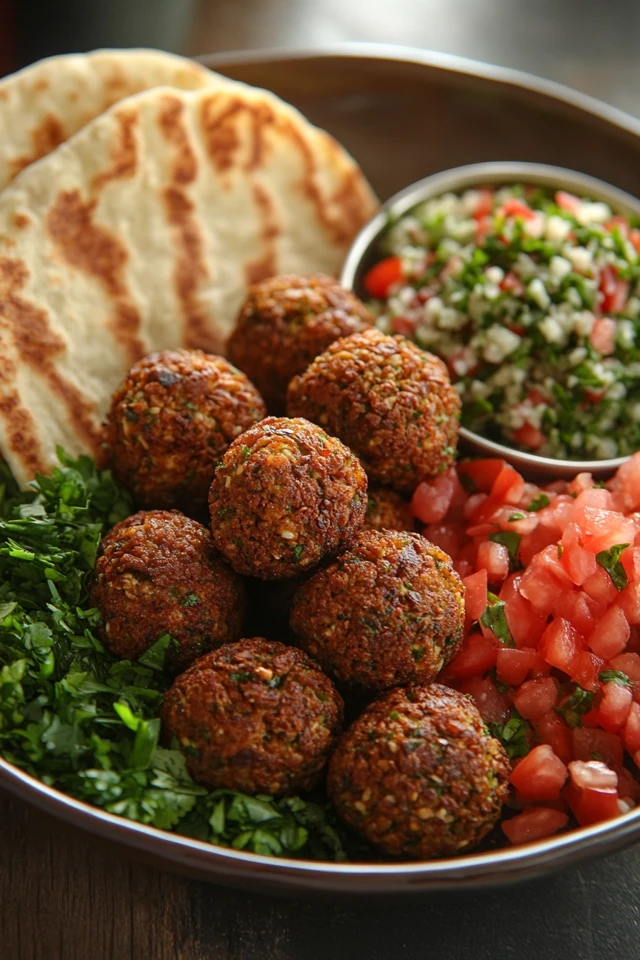
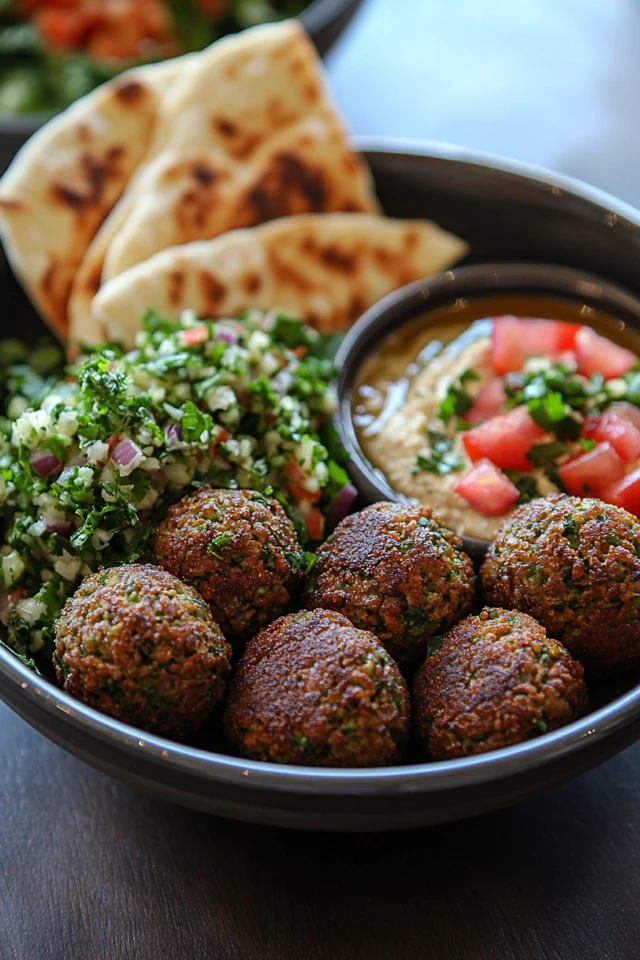
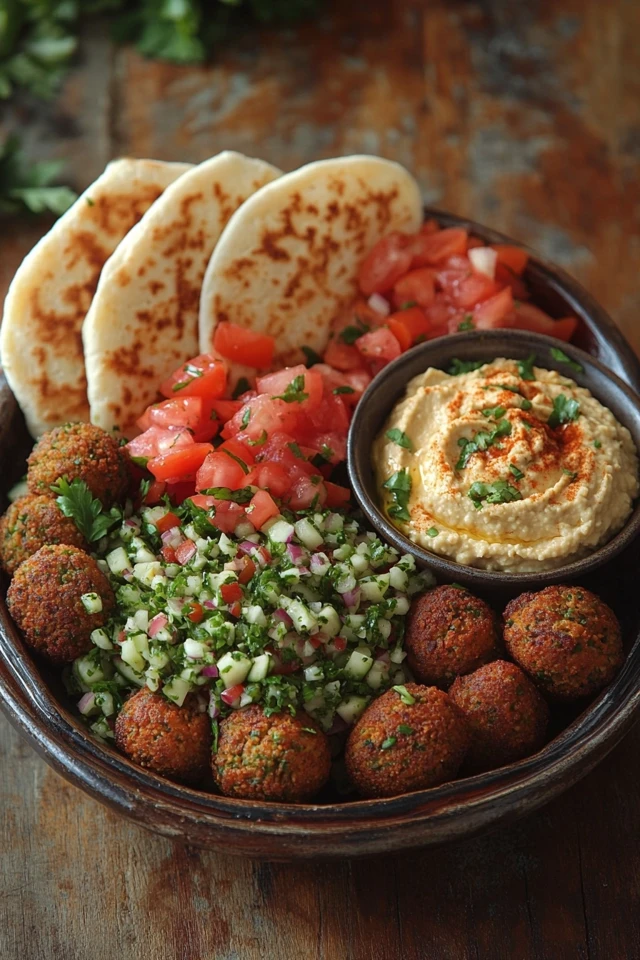
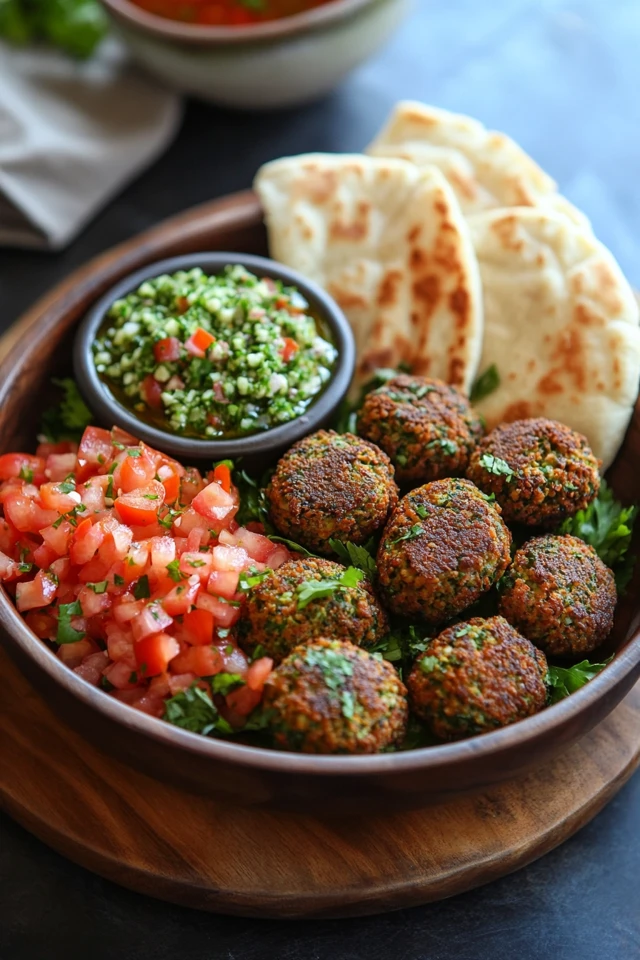
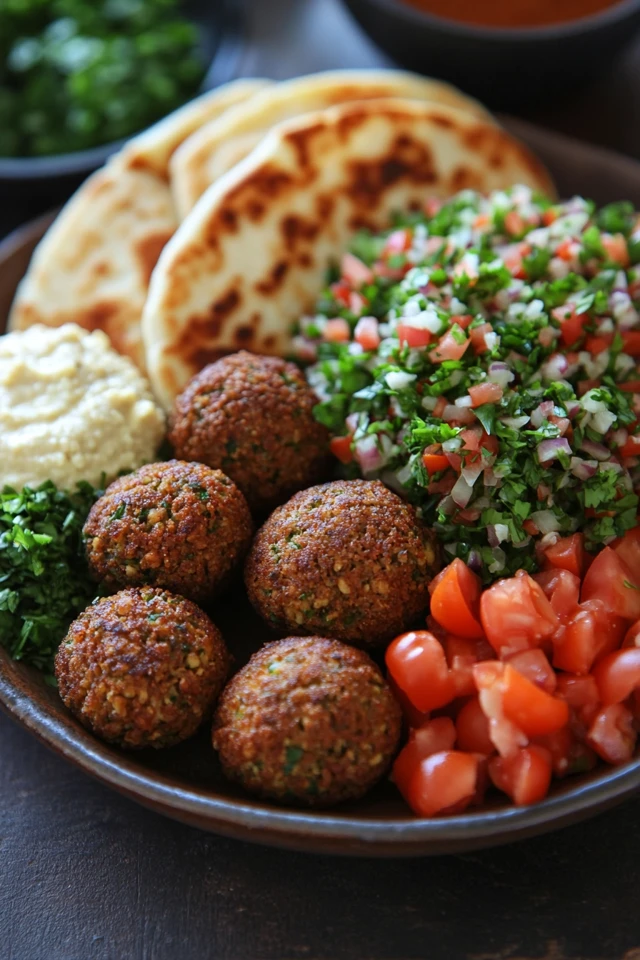
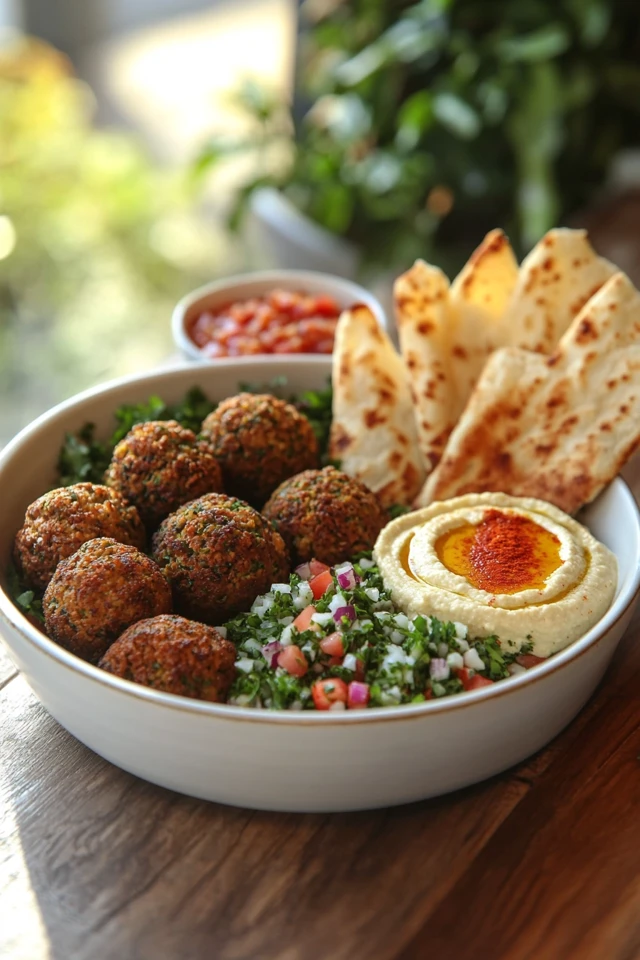
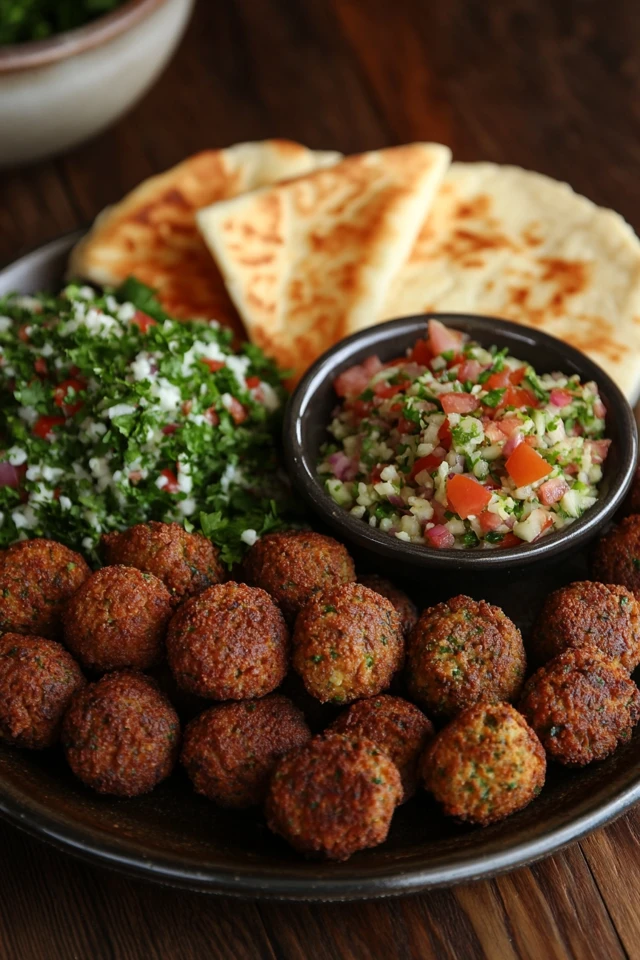
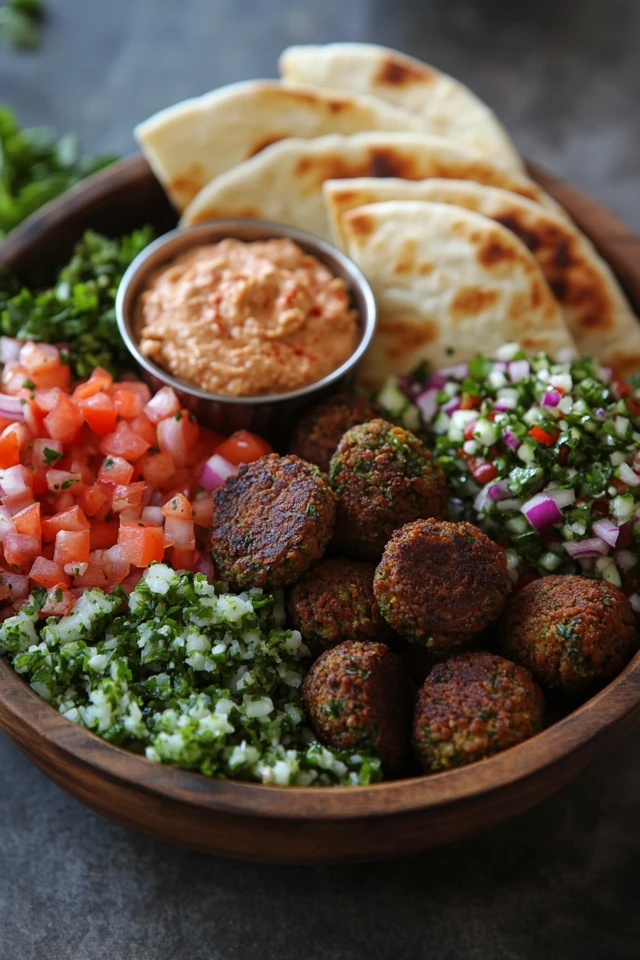
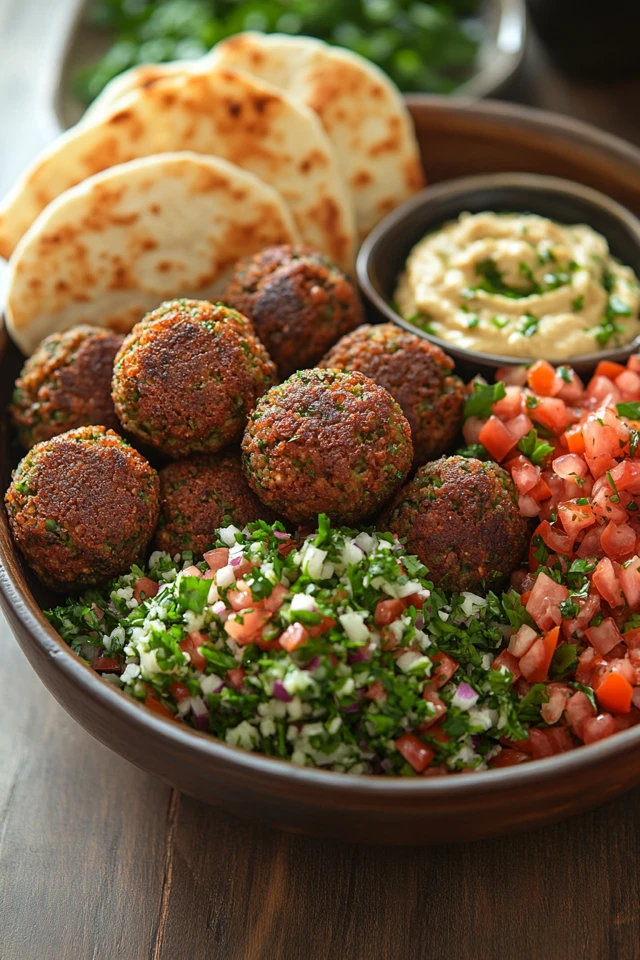
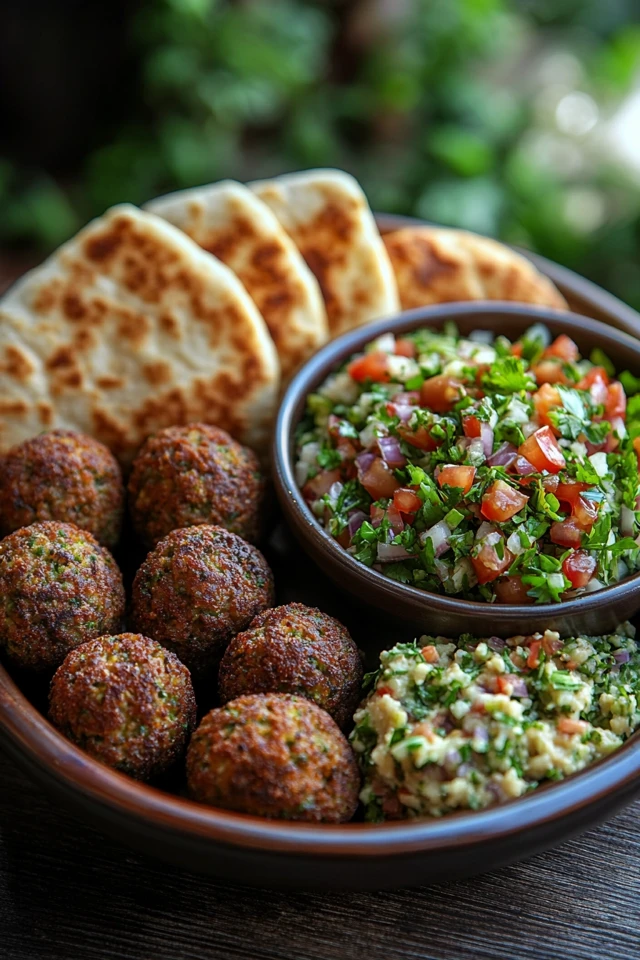
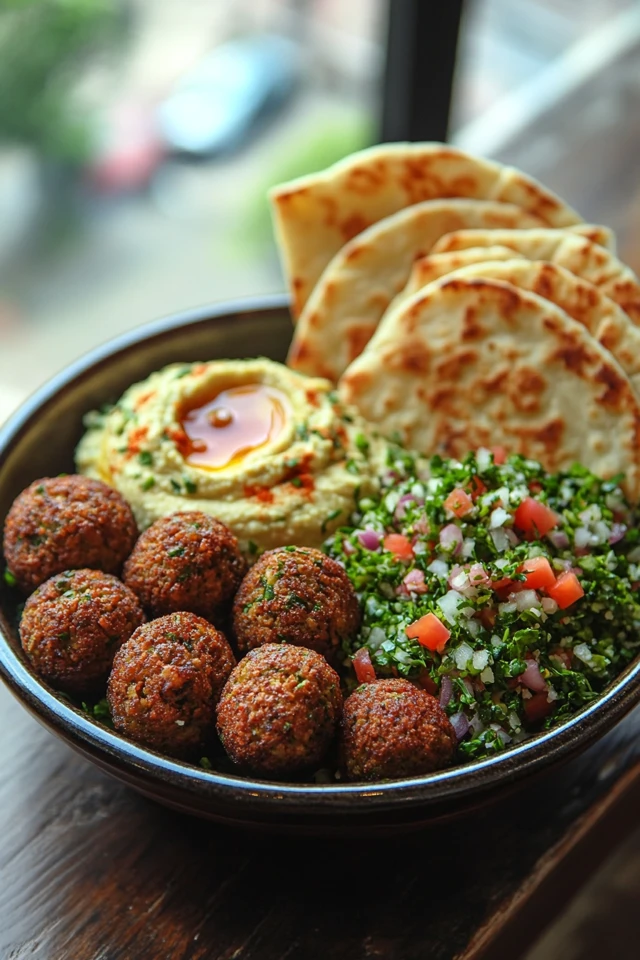
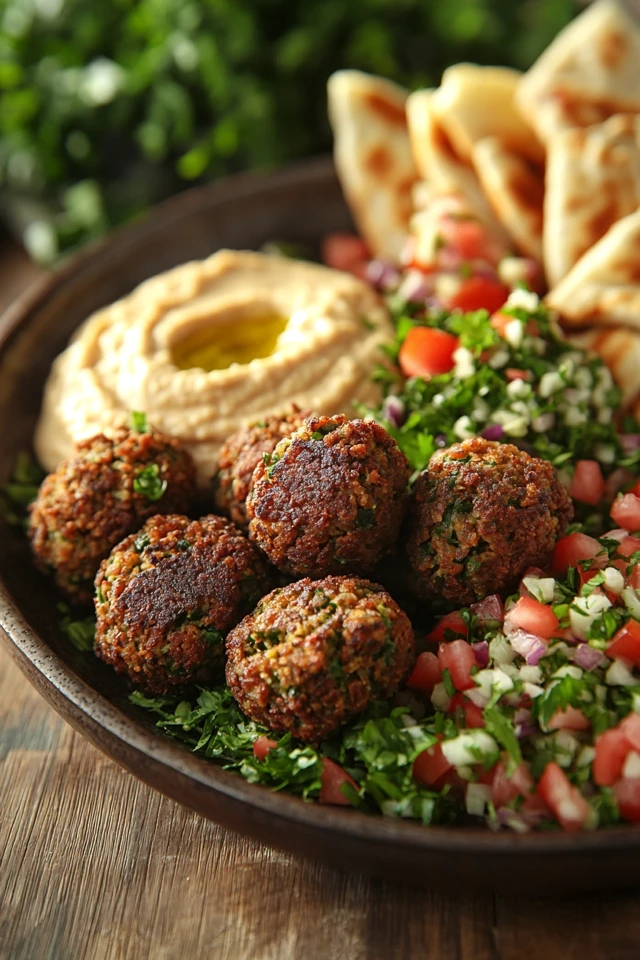
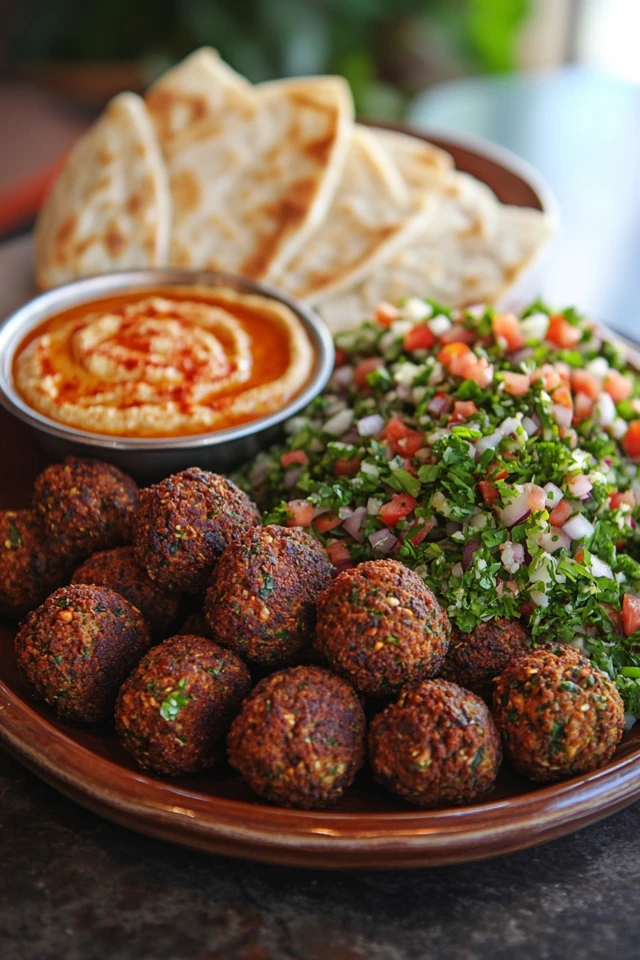
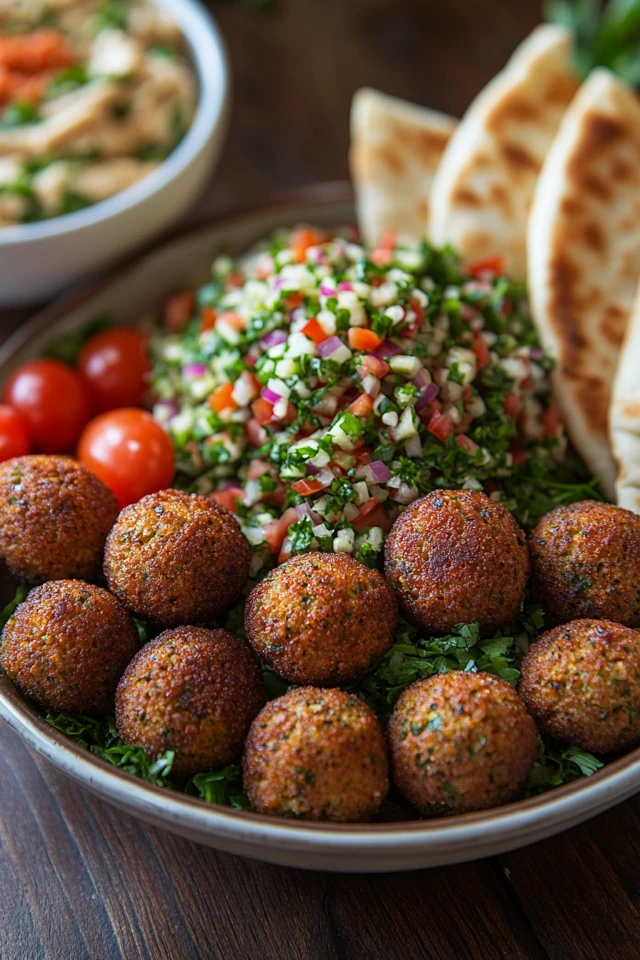
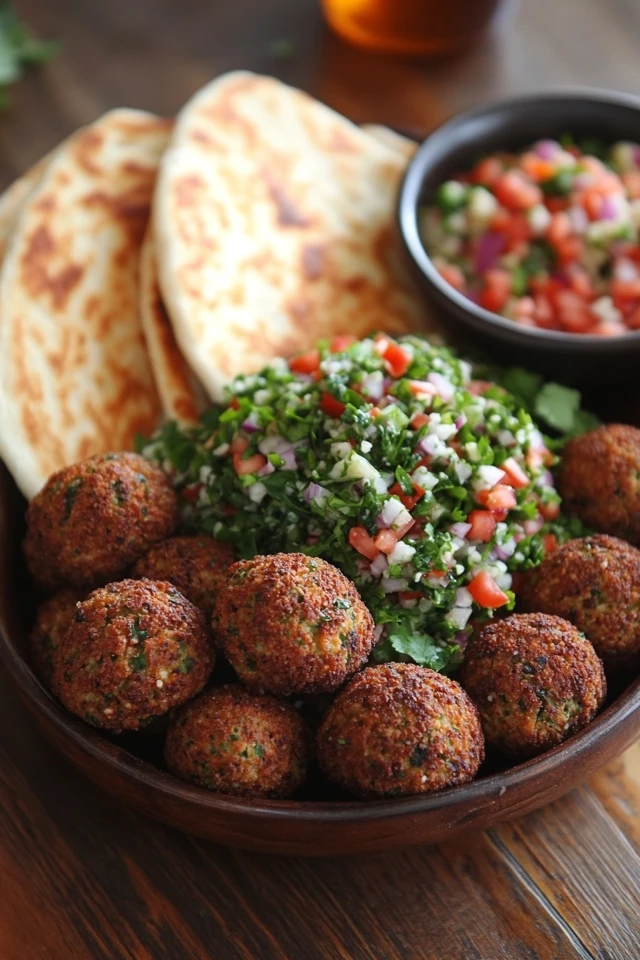
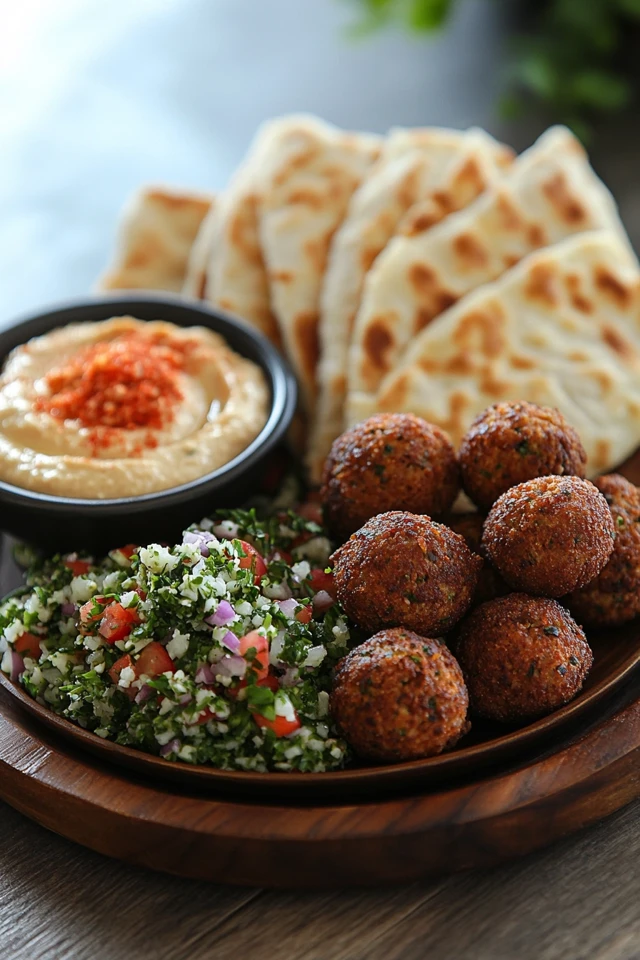
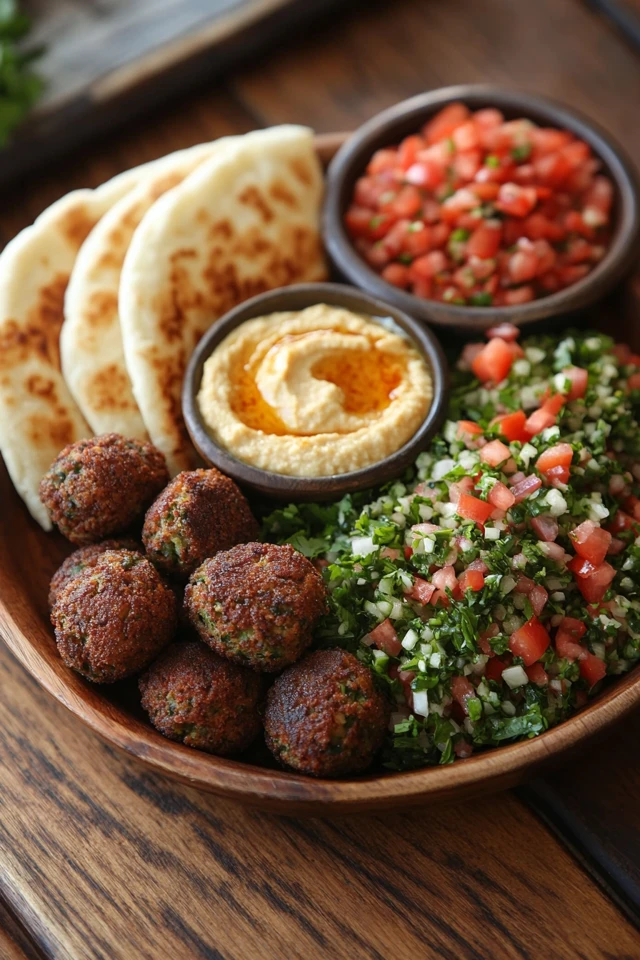
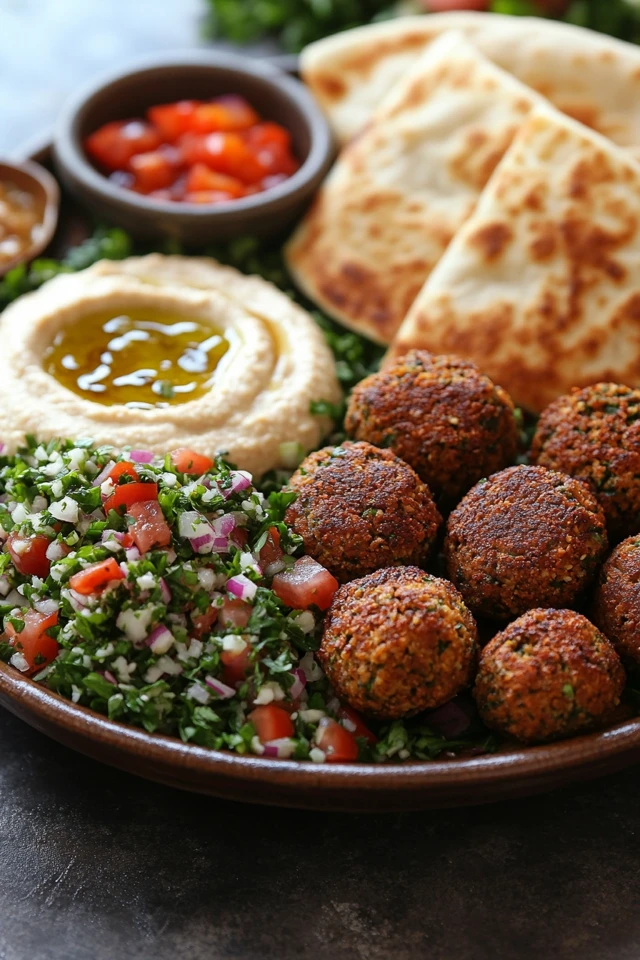
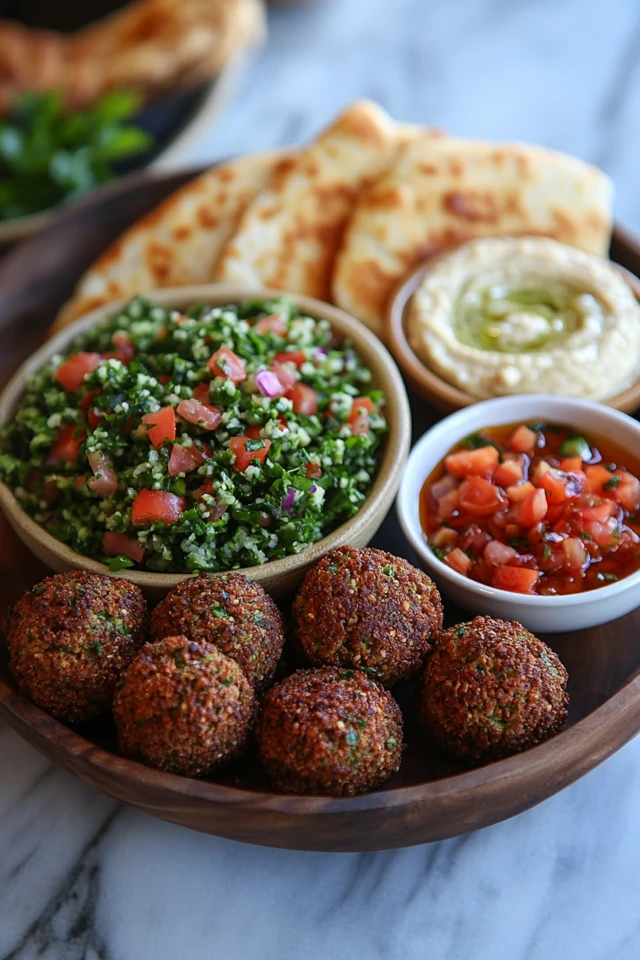
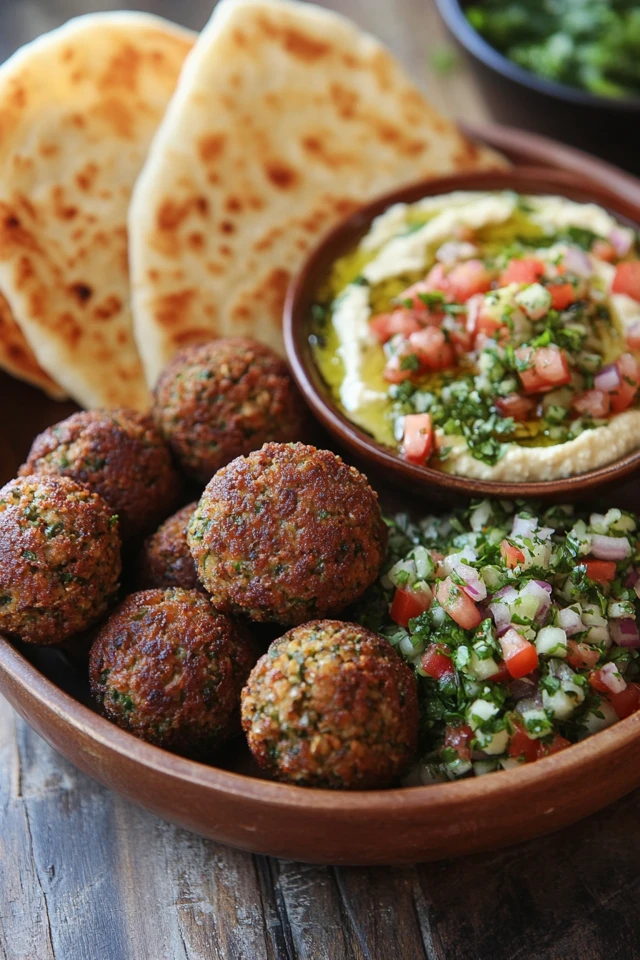
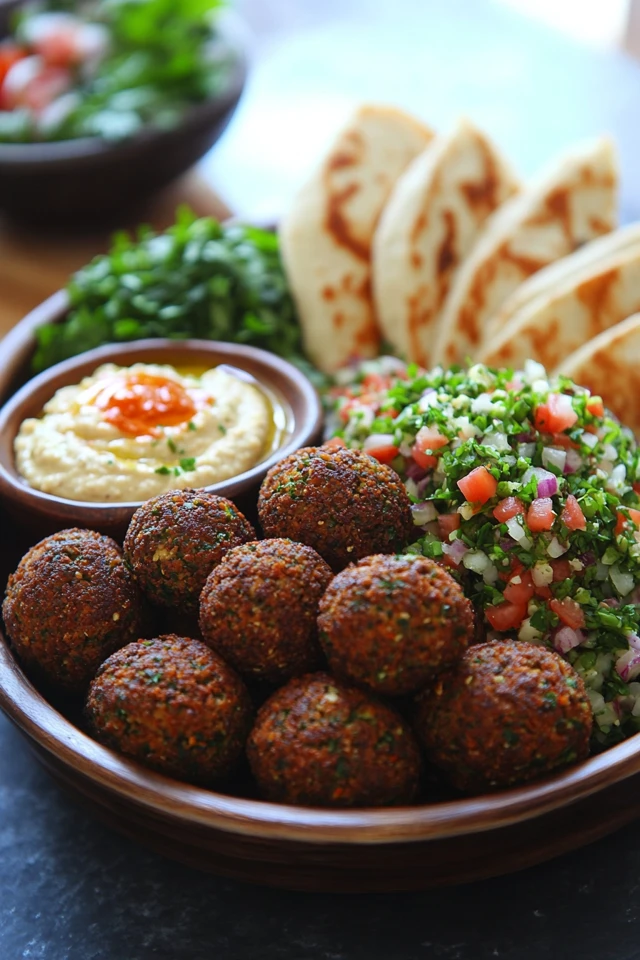
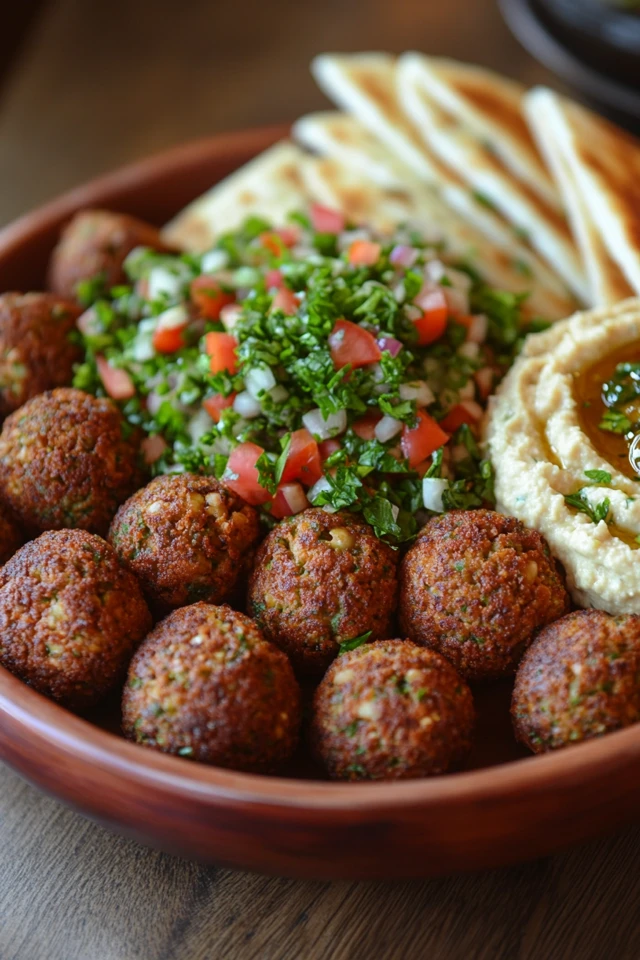
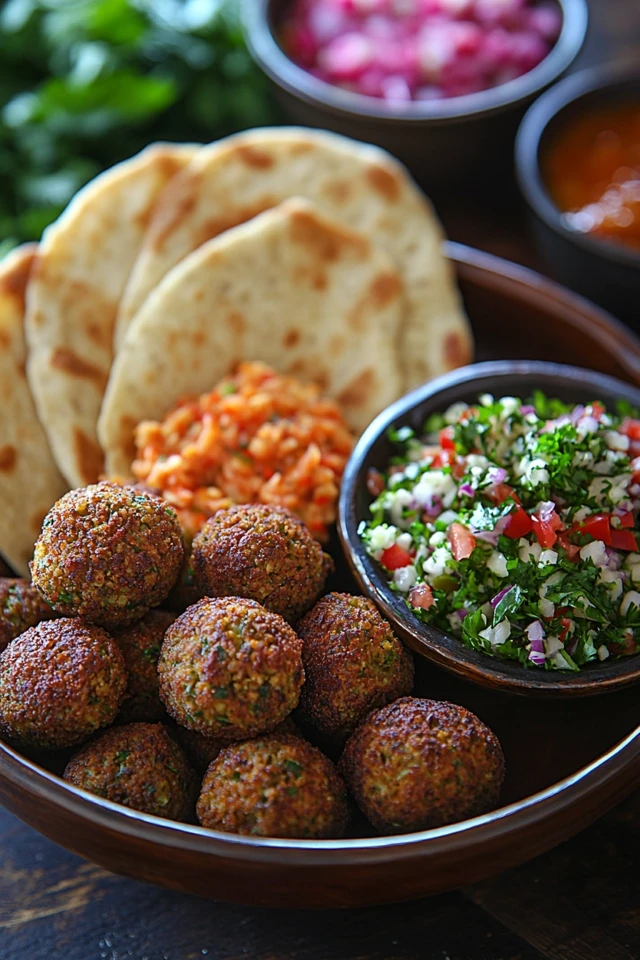
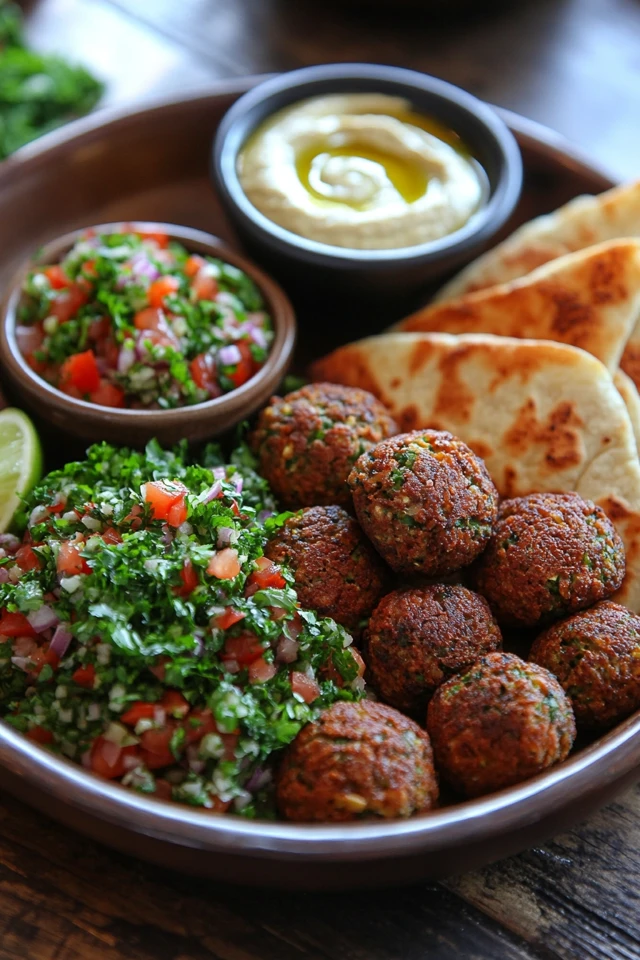
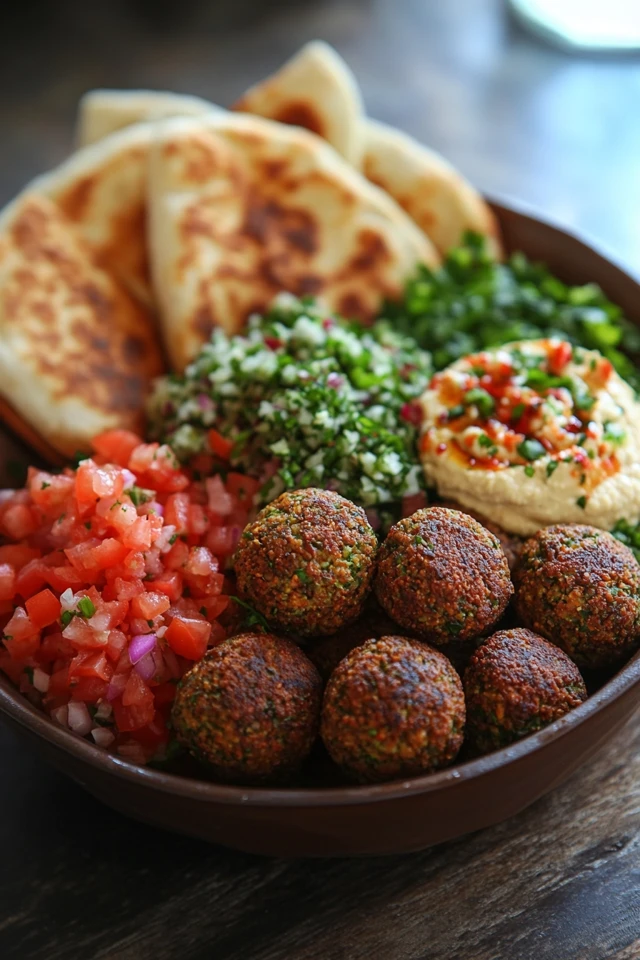
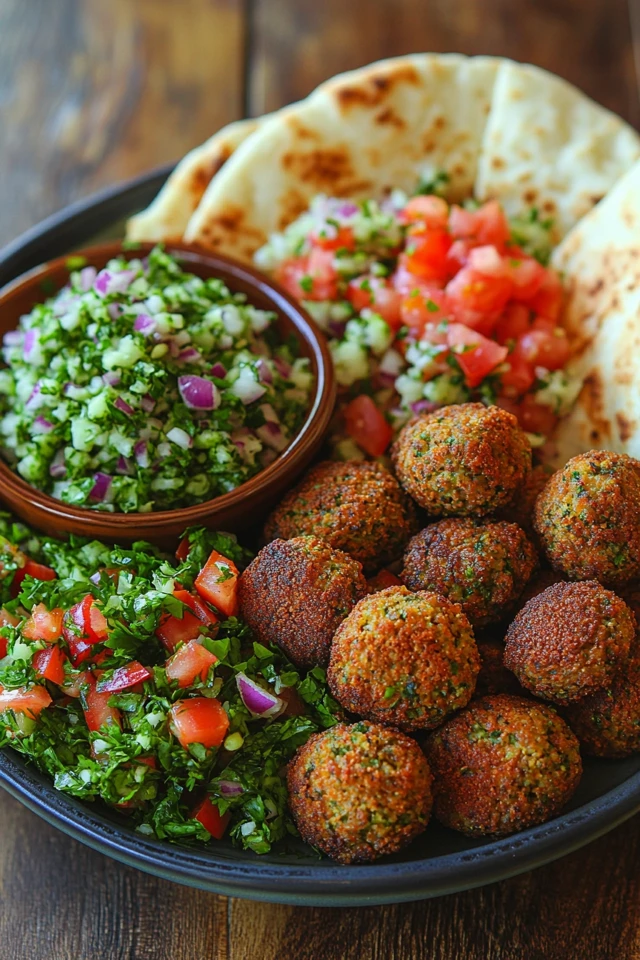
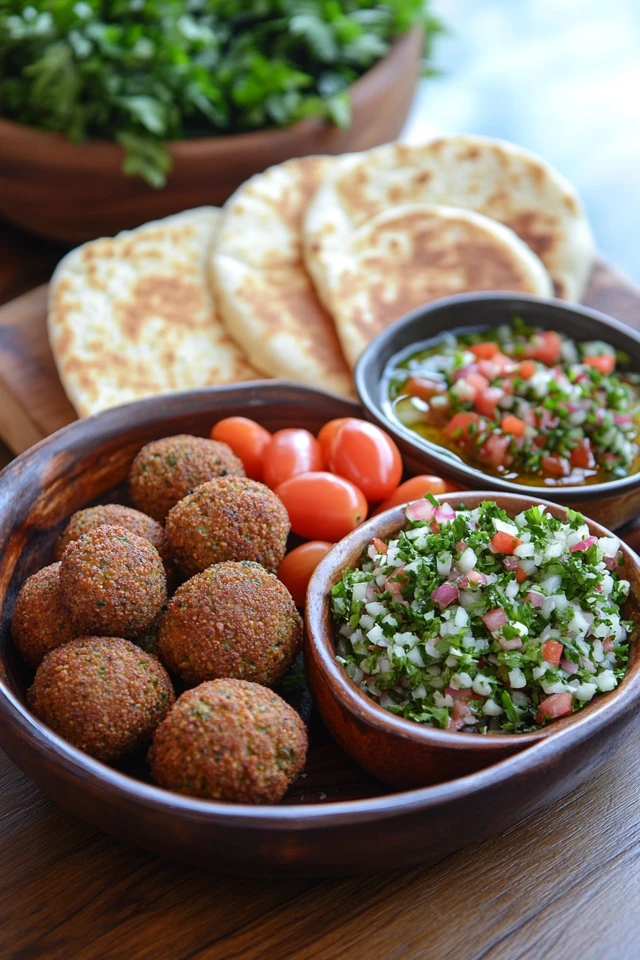
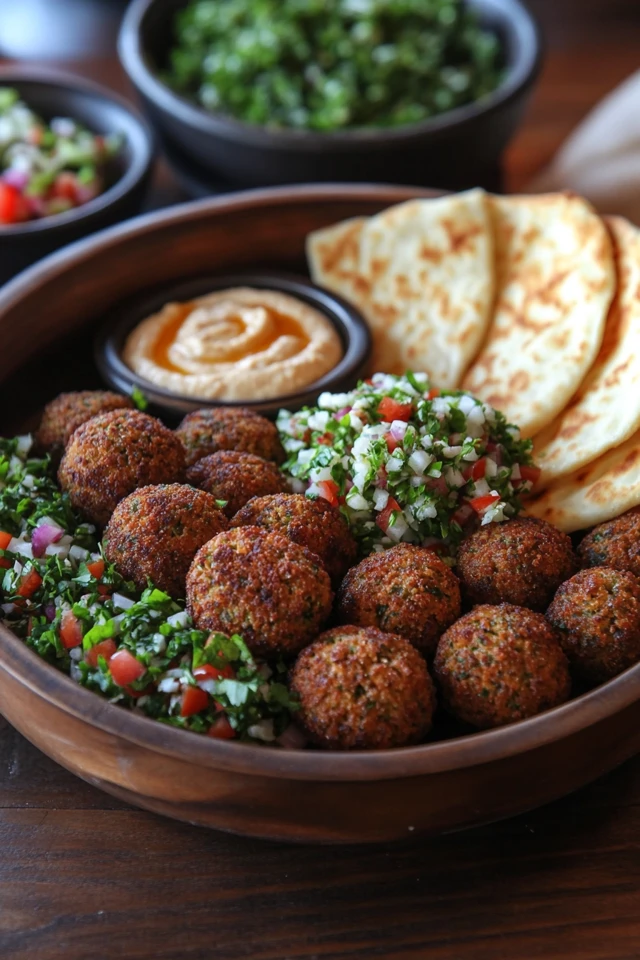
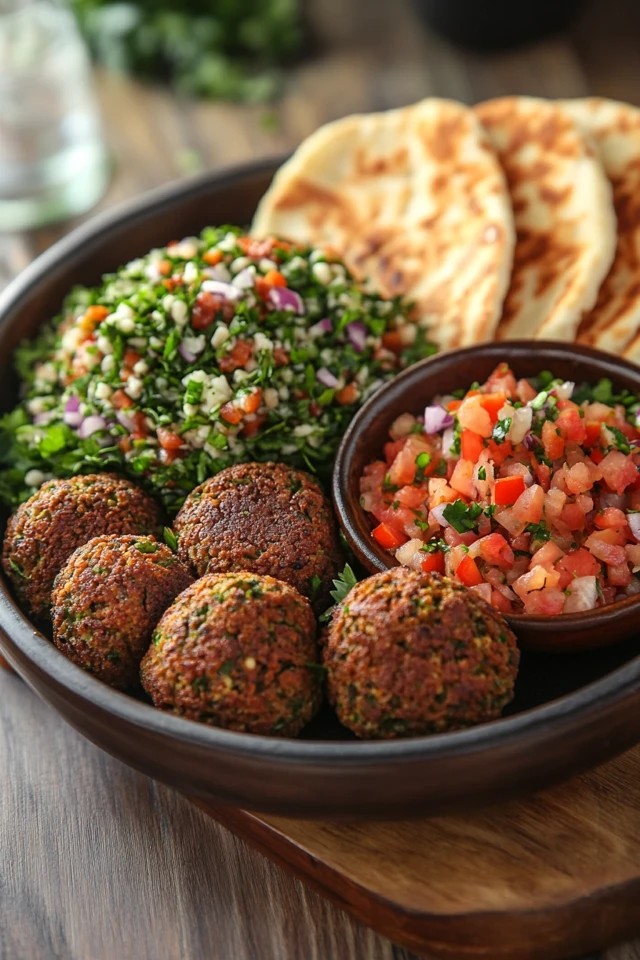
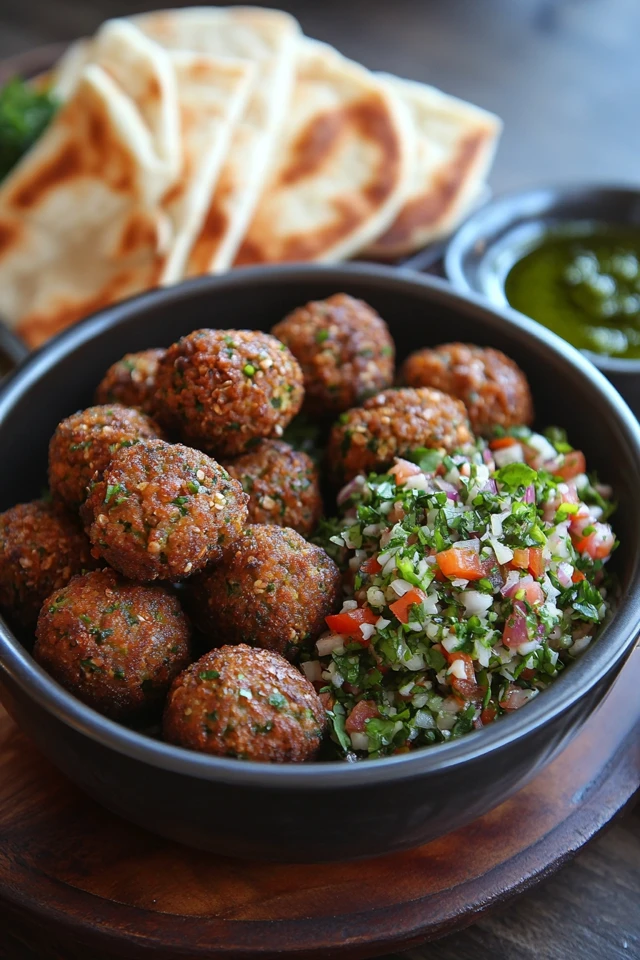
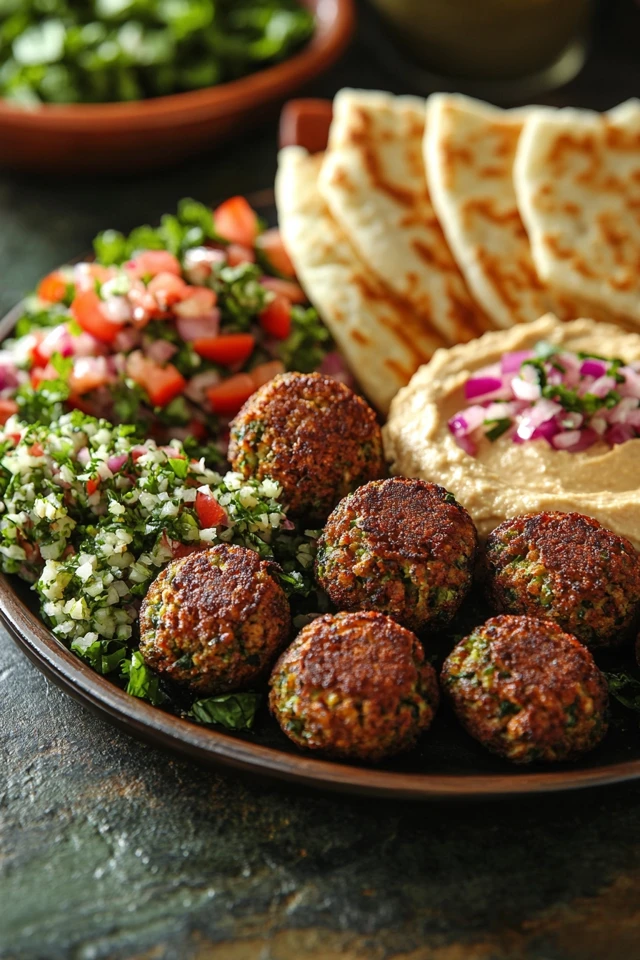
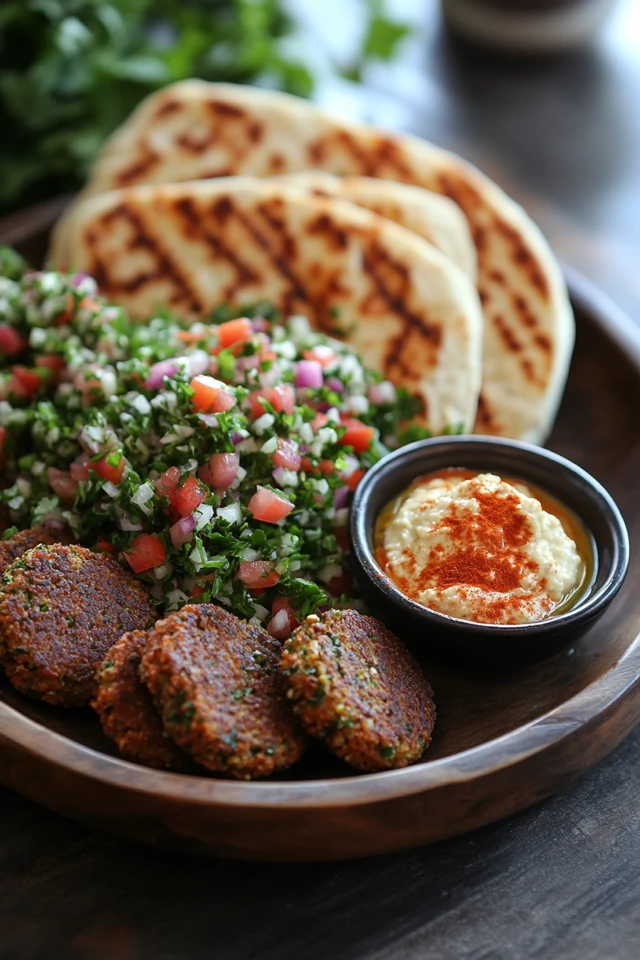
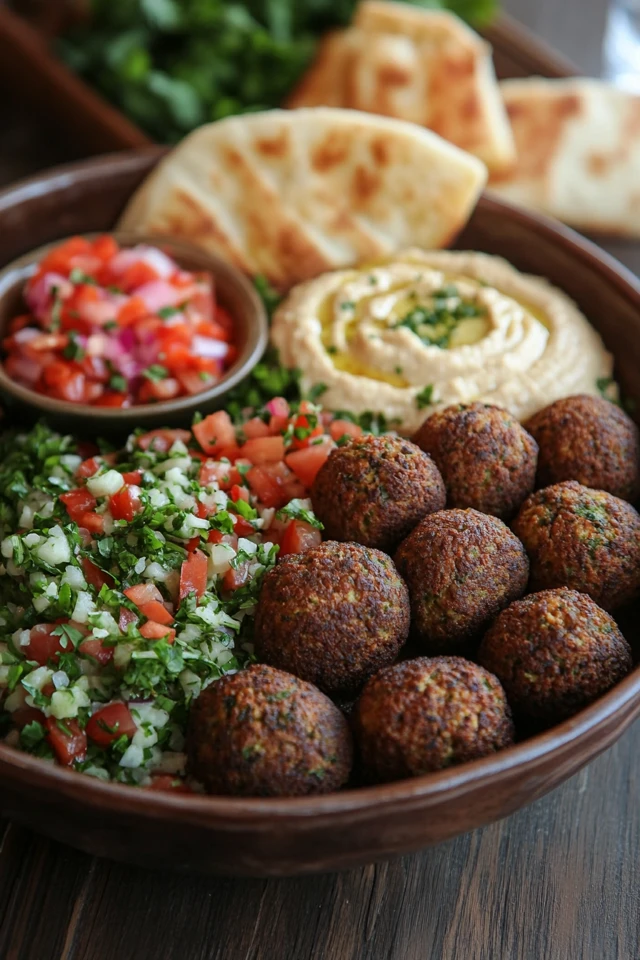
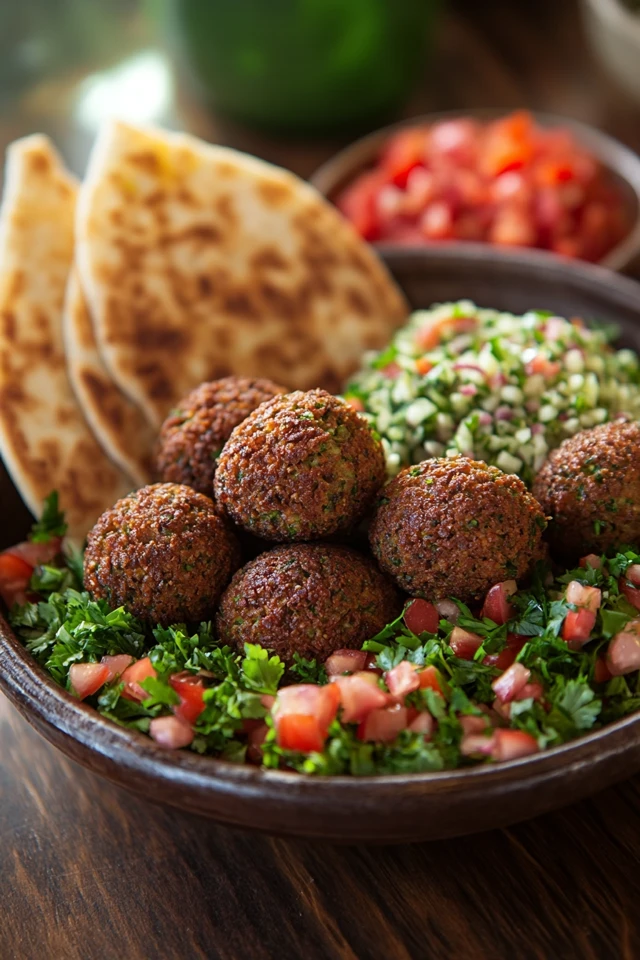
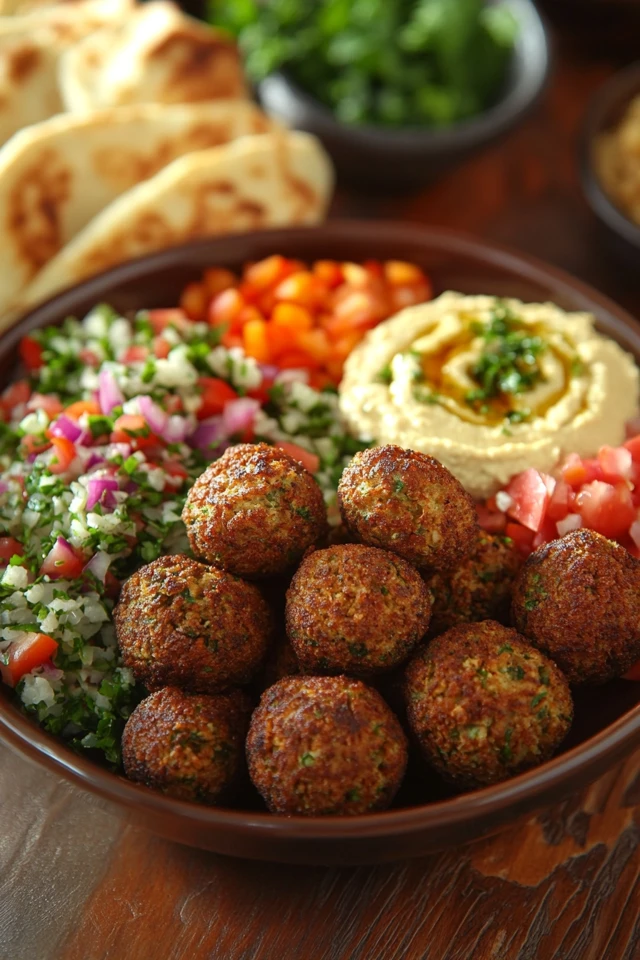
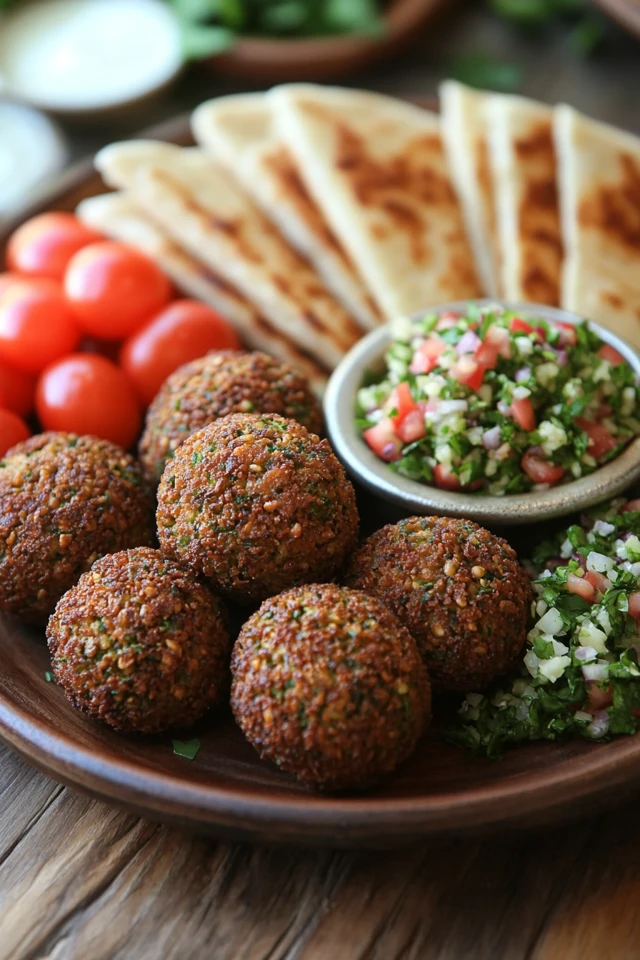
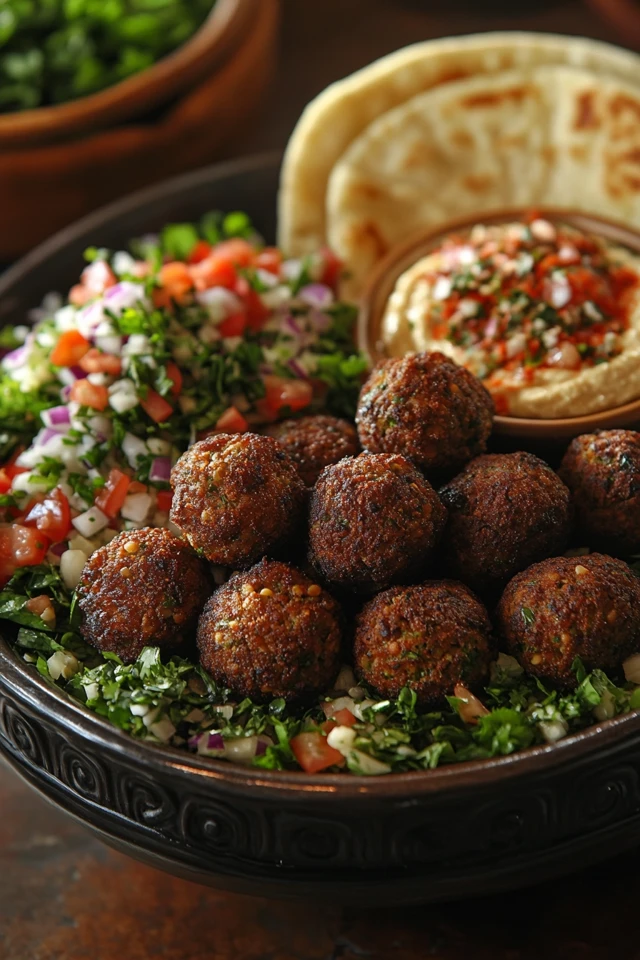
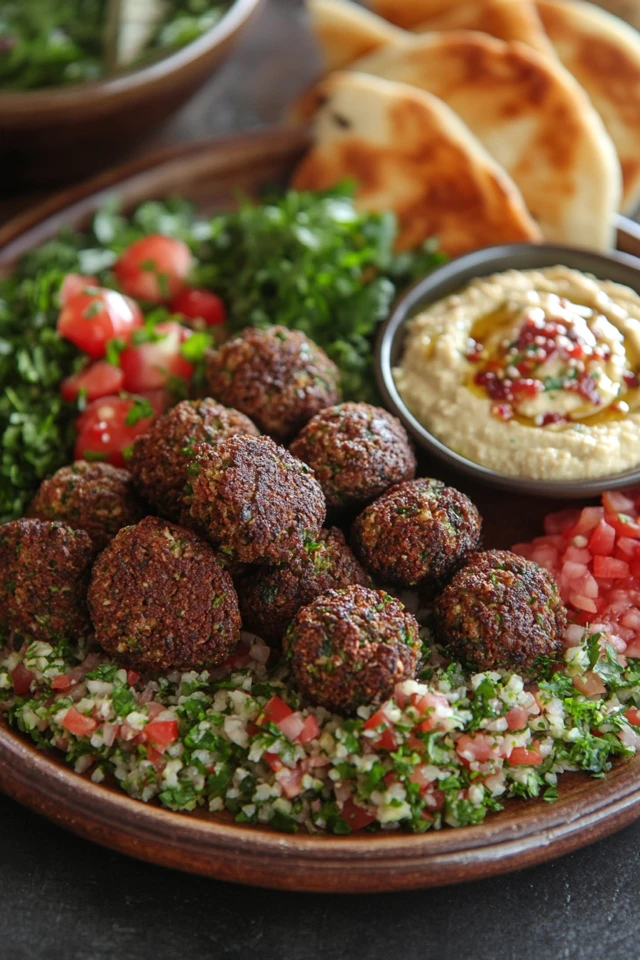
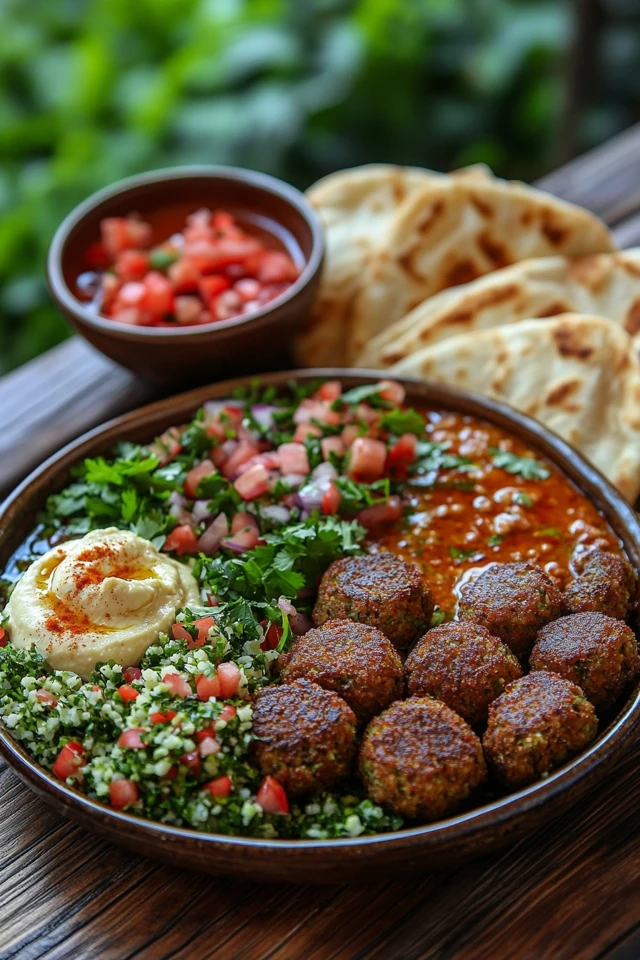
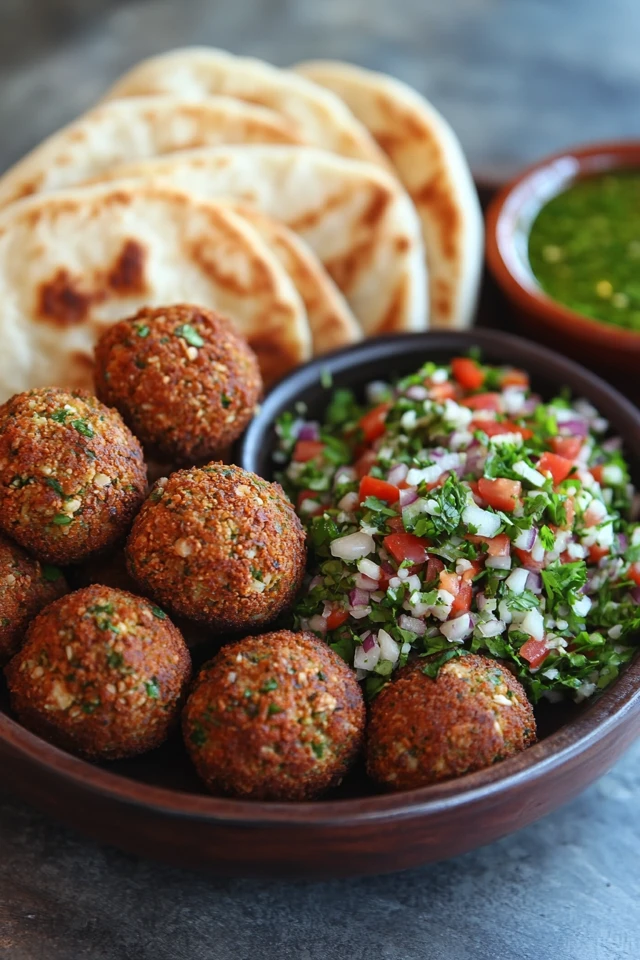
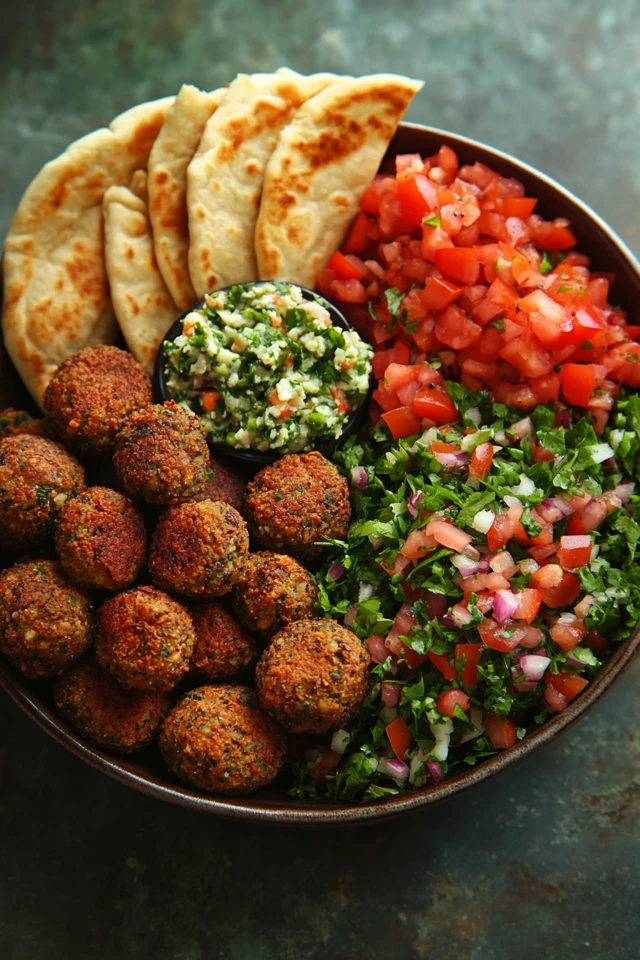
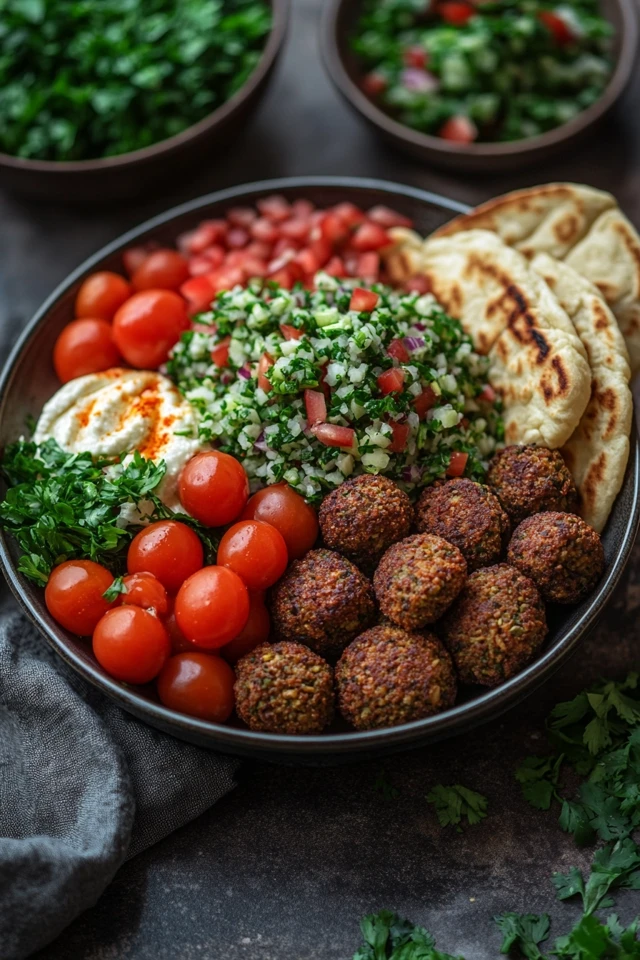
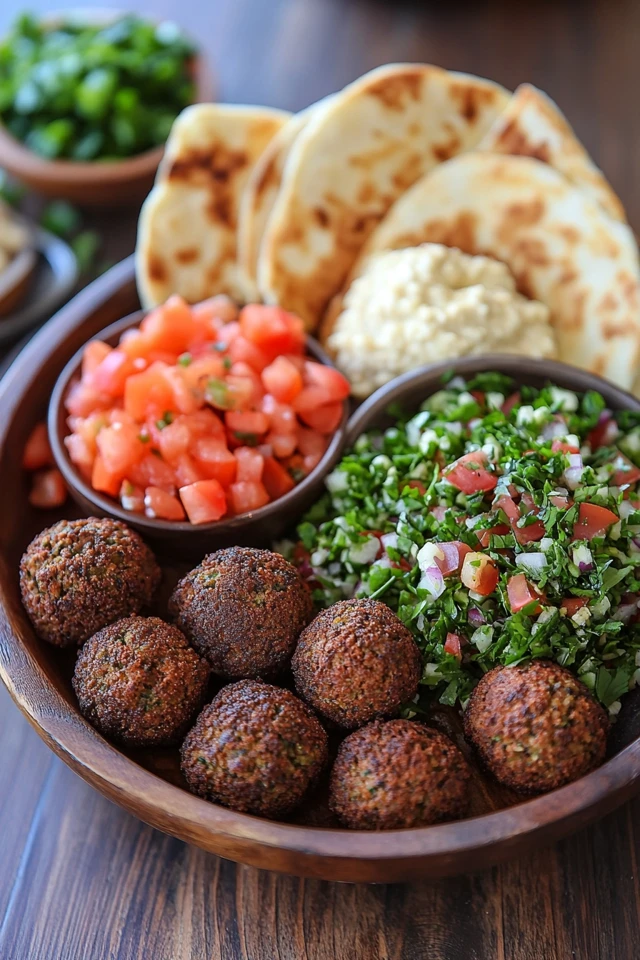
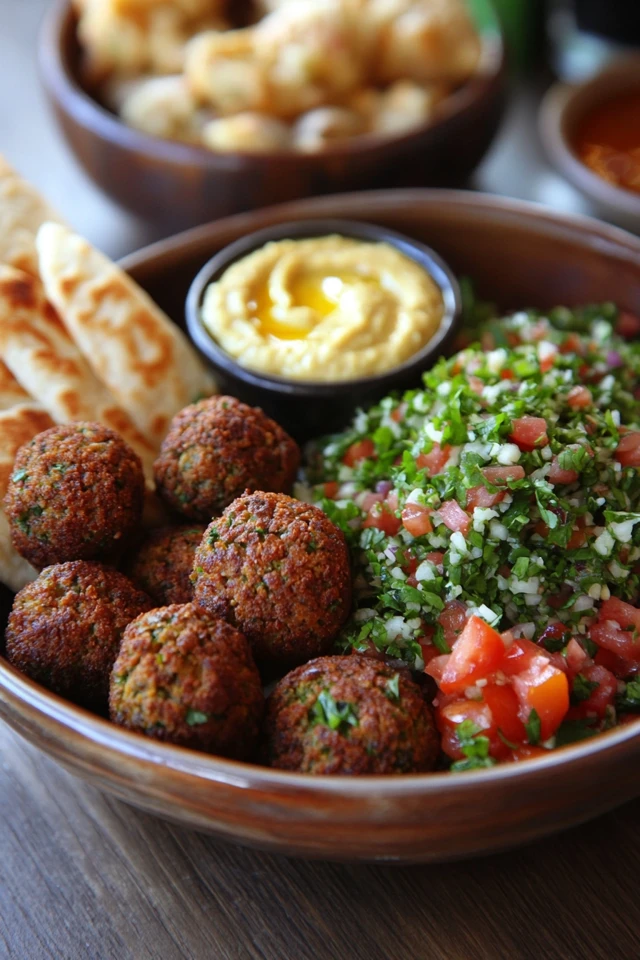
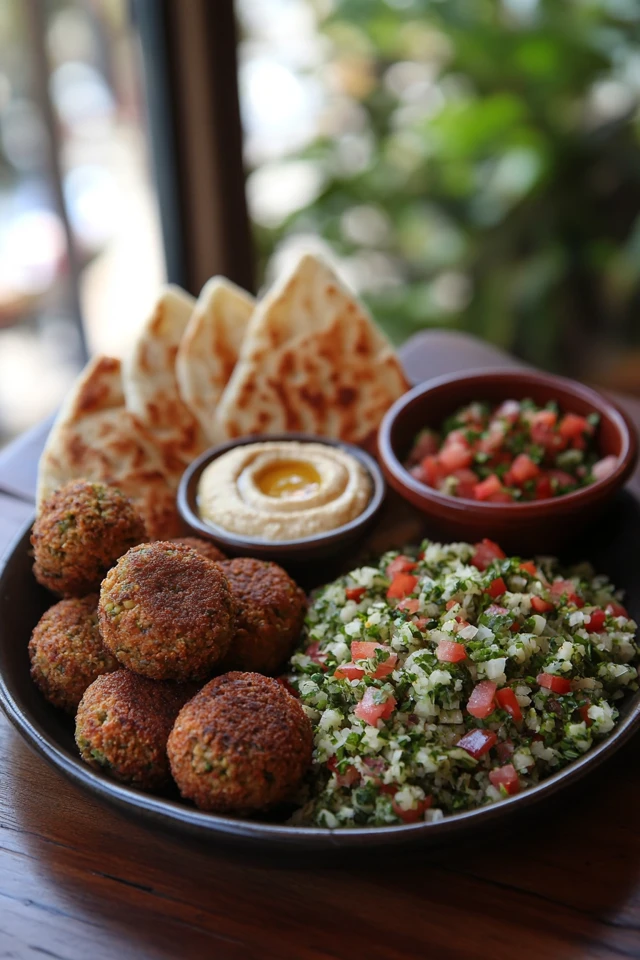
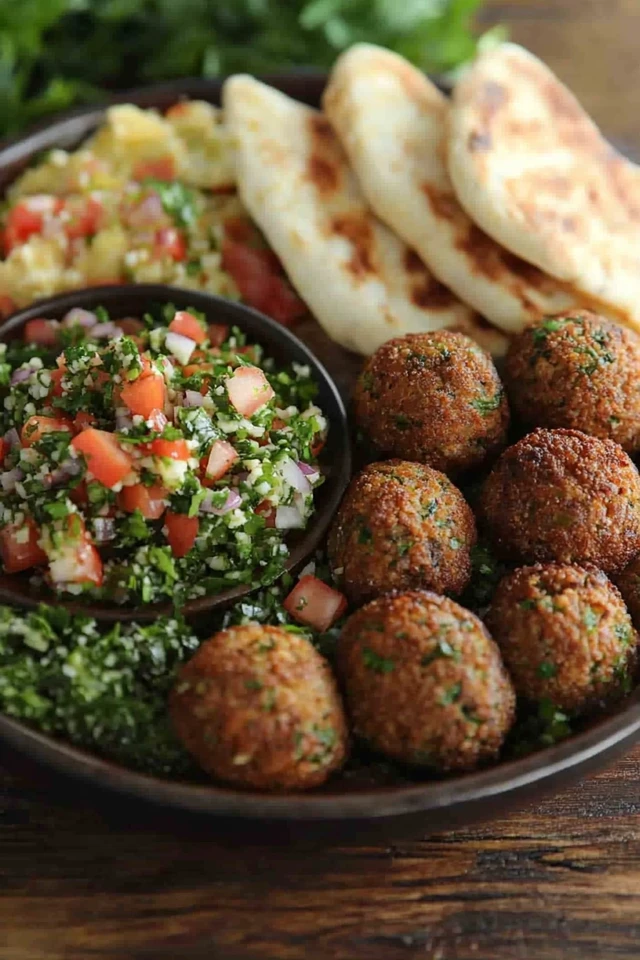
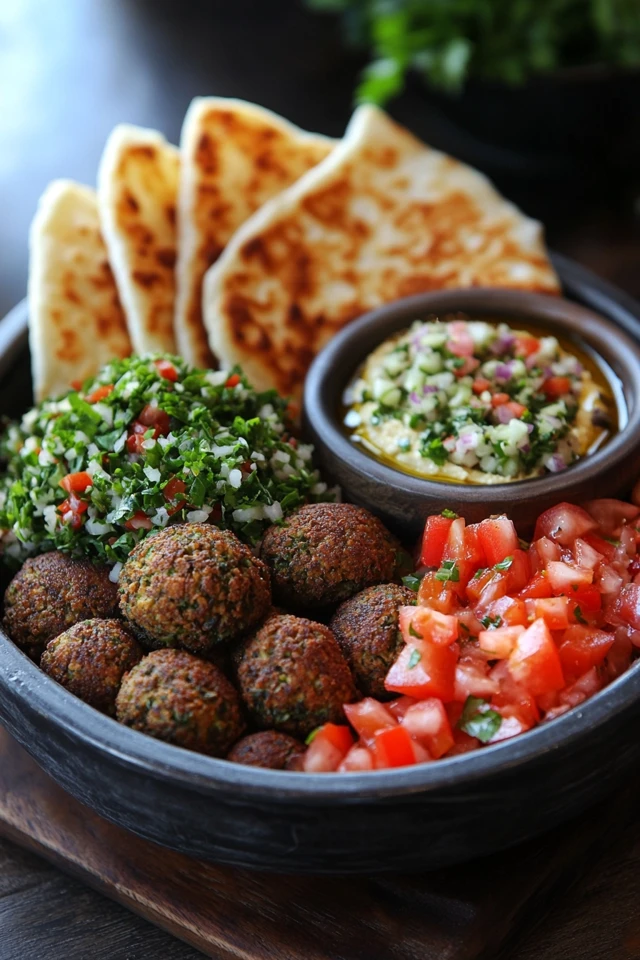
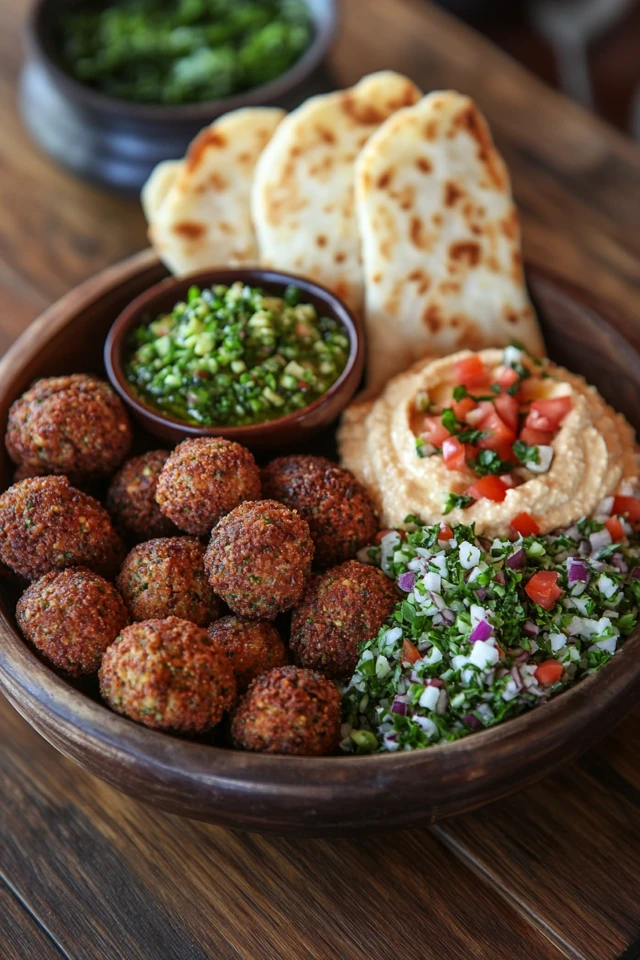
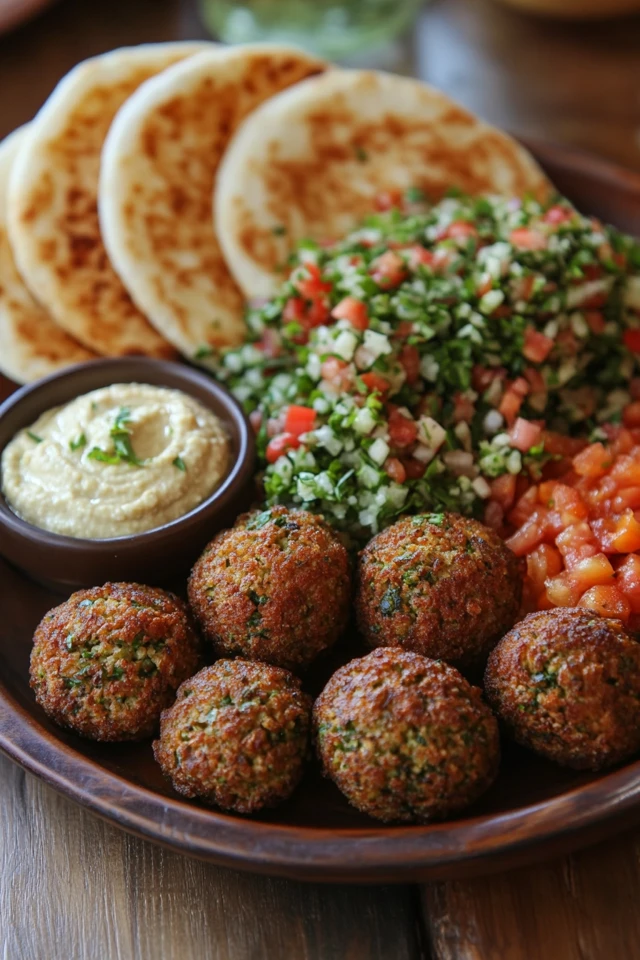
Frequently Asked Questions (FAQs)
1. Can I make these dumplings ahead of time?
Absolutely! Chinese Vegan Dumplings can be assembled a few hours ahead and stored in the refrigerator. Cover them with a damp cloth to prevent the wrappers from drying out. Freeze the dumplings for up to 3 months by arranging them on a baking sheet until solid, then transferring to a freezer-safe bag or container. Cook them directly from frozen, adding a few extra minutes to the cooking time.
2. What can I substitute for tofu or tempeh in the filling?
You can substitute tofu or tempeh with seitan, chickpeas, or jackfruit for different textures and flavors:
- Seitan: Offers a chewy and hearty texture similar to traditional meat fillings.
- Chickpeas: Provide a creamy and slightly nutty flavor.
- Jackfruit: Mimics shredded meat with its fibrous texture.
3. Is this recipe gluten-free?
Yes! By using tamari instead of regular soy sauce and ensuring that all other ingredients, including the dumpling wrappers, are gluten-free, you can easily make these dumplings gluten-free. Always check labels to confirm the gluten-free status of store-bought wrappers and sauces.
4. How can I make the dumplings crispy?
To achieve crispy dumplings, opt for the pan-frying method. After frying the bottoms until golden brown, add a splash of water to the skillet and cover with a lid to steam the dumplings. Once the water has evaporated, uncover and let the dumplings crisp up again. Alternatively, brush the dumplings with a little oil before frying for an extra crispy texture.
5. Can I add more vegetables to the filling?
Absolutely! Feel free to incorporate additional vegetables like finely diced mushrooms, spinach, napa cabbage, or water chestnuts to increase the nutritional value and add more texture to your dumplings.
6. Is it necessary to press the tofu?
While not absolutely necessary, pressing the tofu removes excess moisture, allowing it to absorb more of the marinade and enhancing the overall flavor and texture of the dumplings. If you’re short on time, you can pat the tofu dry with paper towels instead.
7. How do I store leftovers?
Store any leftover dumplings in an airtight container in the refrigerator for up to 3 days. Reheat them by steaming or pan-frying to restore their original texture. For longer storage, freeze the dumplings as mentioned earlier.
8. Can I use different types of dumpling wrappers?
Yes! You can use different types of dumpling wrappers such as wonton wrappers, gyoza wrappers, or even rice paper wrappers for a gluten-free option. Ensure that the wrappers are fresh and pliable for the best results.
9. What can I serve alongside these dumplings?
Serve your Chinese Vegan Dumplings alongside other appetizers like spring rolls, edamame, seaweed salad, or a fresh vegetable platter. They also pair beautifully with main dishes such as stir-fries, noodle bowls, or rice dishes for a complete meal.
10. Can I make a sweet version of these dumplings?
While traditional dumplings are savory, you can experiment with sweet fillings such as apple and cinnamon, chocolate and banana, or sweetened red bean paste. Serve with a sweet dipping sauce like maple syrup or a drizzle of melted vegan chocolate for a delightful dessert option.
About the Author
Welcome to Vegan & Plant-Based Kitchen! I’m Julio Arco, a passionate vegan chef dedicated to creating delicious, easy-to-make plant-based recipes that nourish both body and soul. Since embracing a vegan lifestyle in 2010, I’ve been on a culinary journey to explore the endless possibilities of plant-based cooking. From vibrant salads to hearty mains and indulgent desserts, my mission is to inspire and empower you to embrace a compassionate and healthy lifestyle through wholesome food.
Join me on this journey as we explore diverse flavors, experiment with fresh ingredients, and celebrate the beauty of plant-based living. Let’s create, share, and enjoy the goodness of vegan cooking together!
Disclaimer: This blog post is intended for informational purposes only. Always consult with a healthcare professional before making significant changes to your diet.

